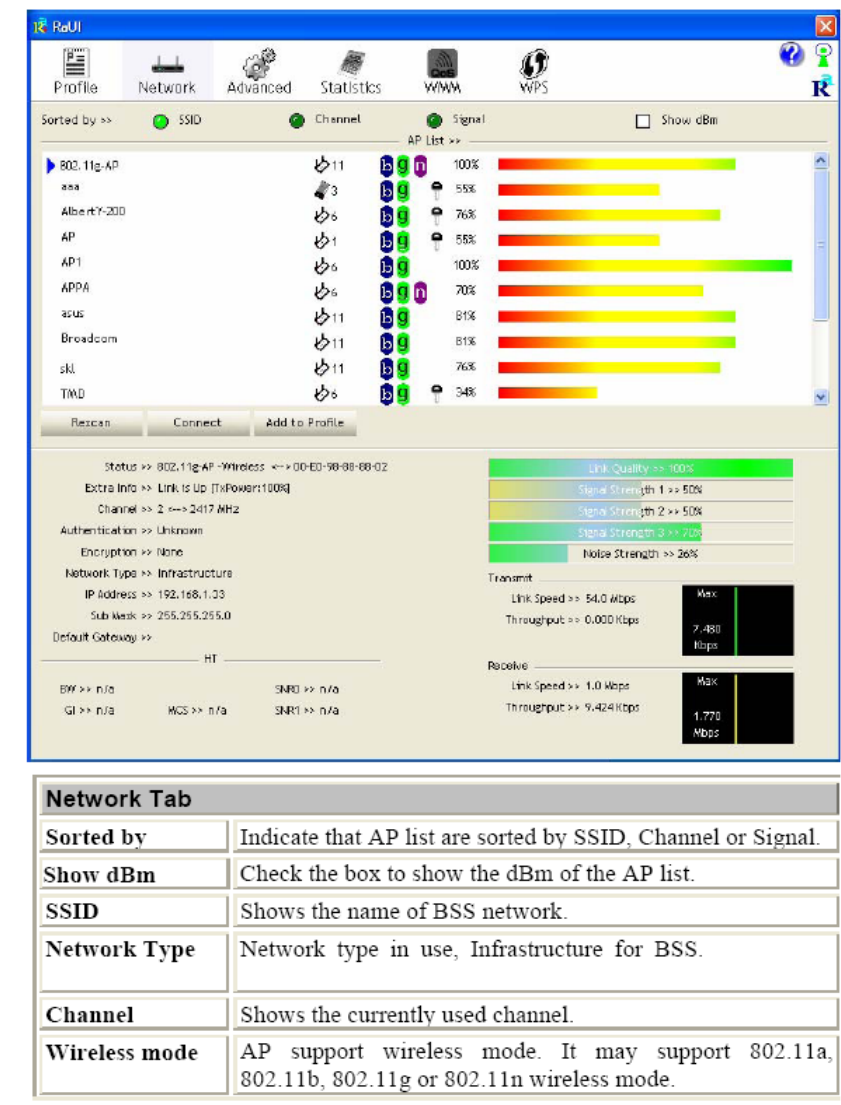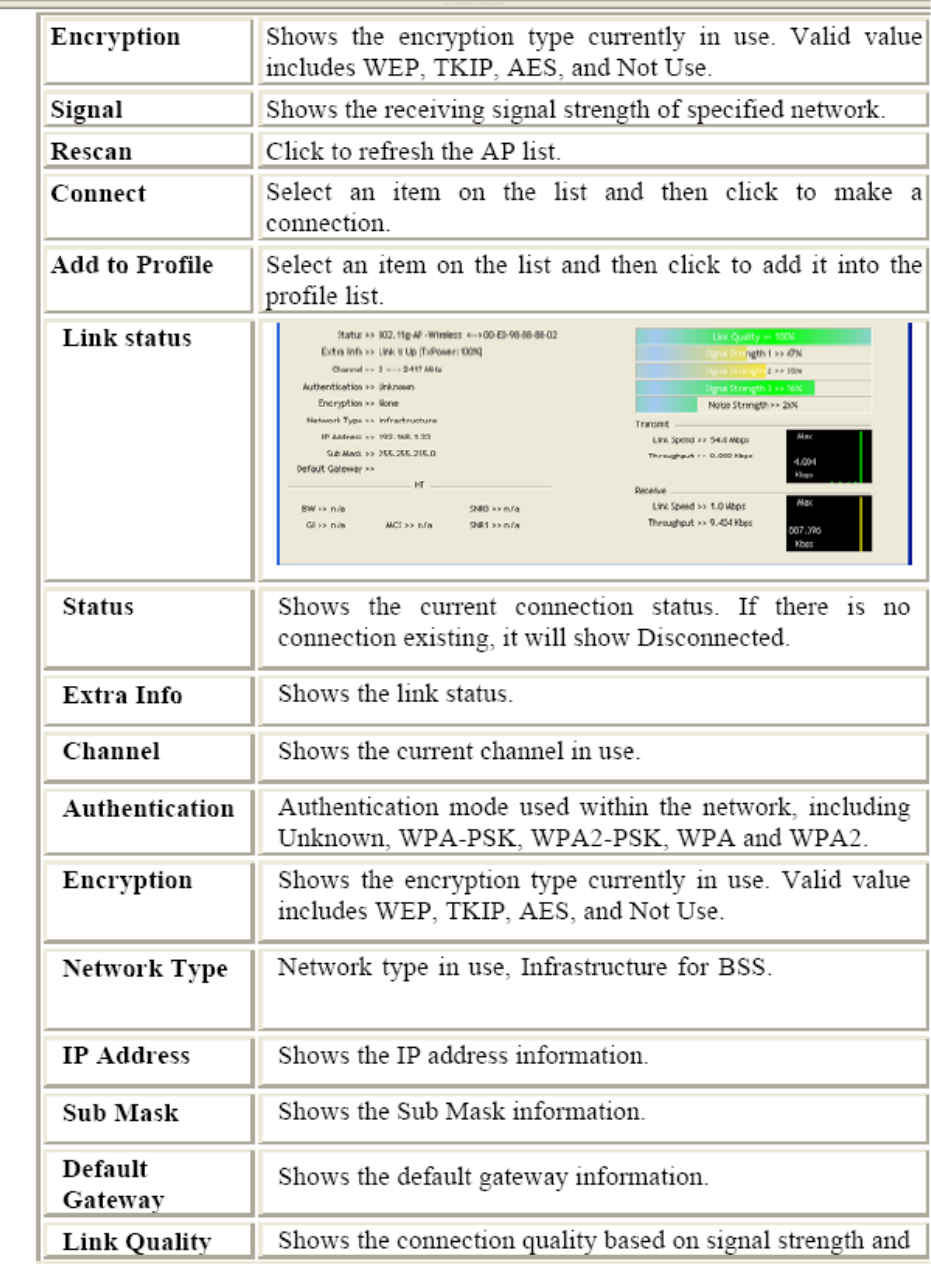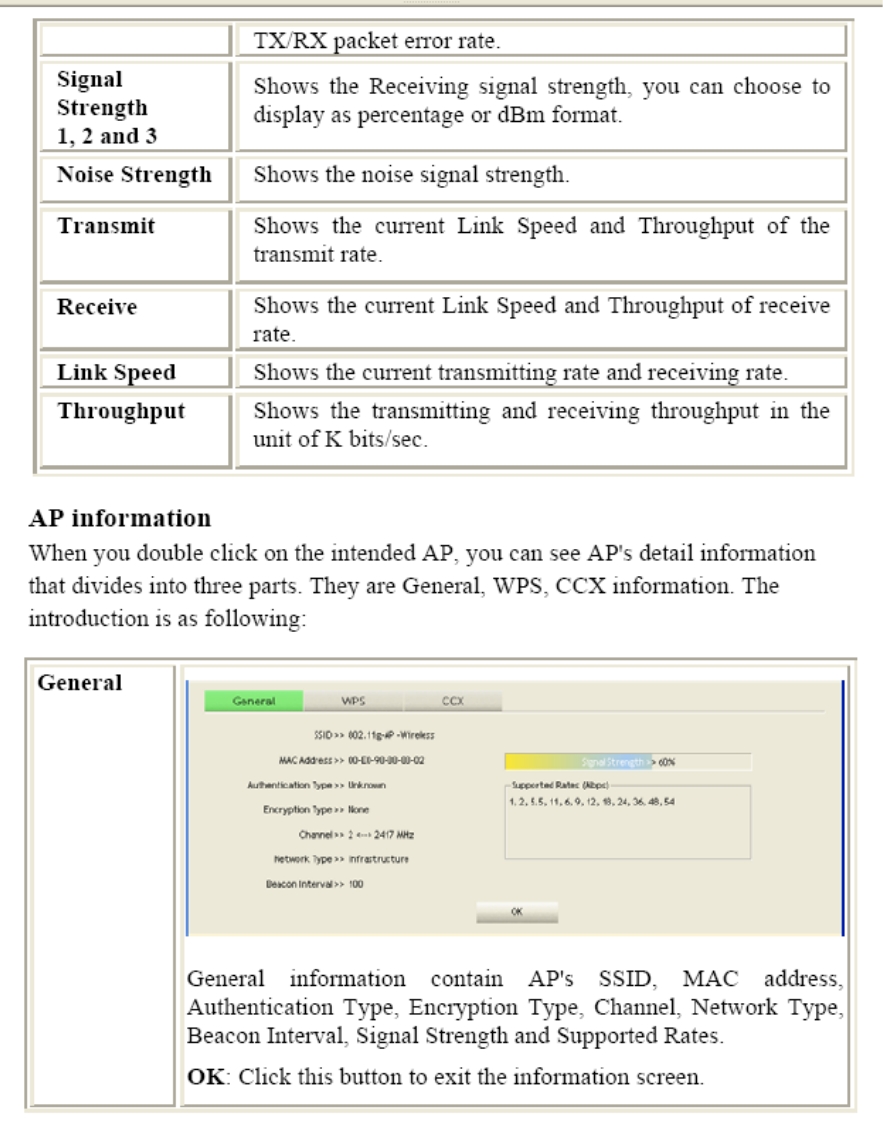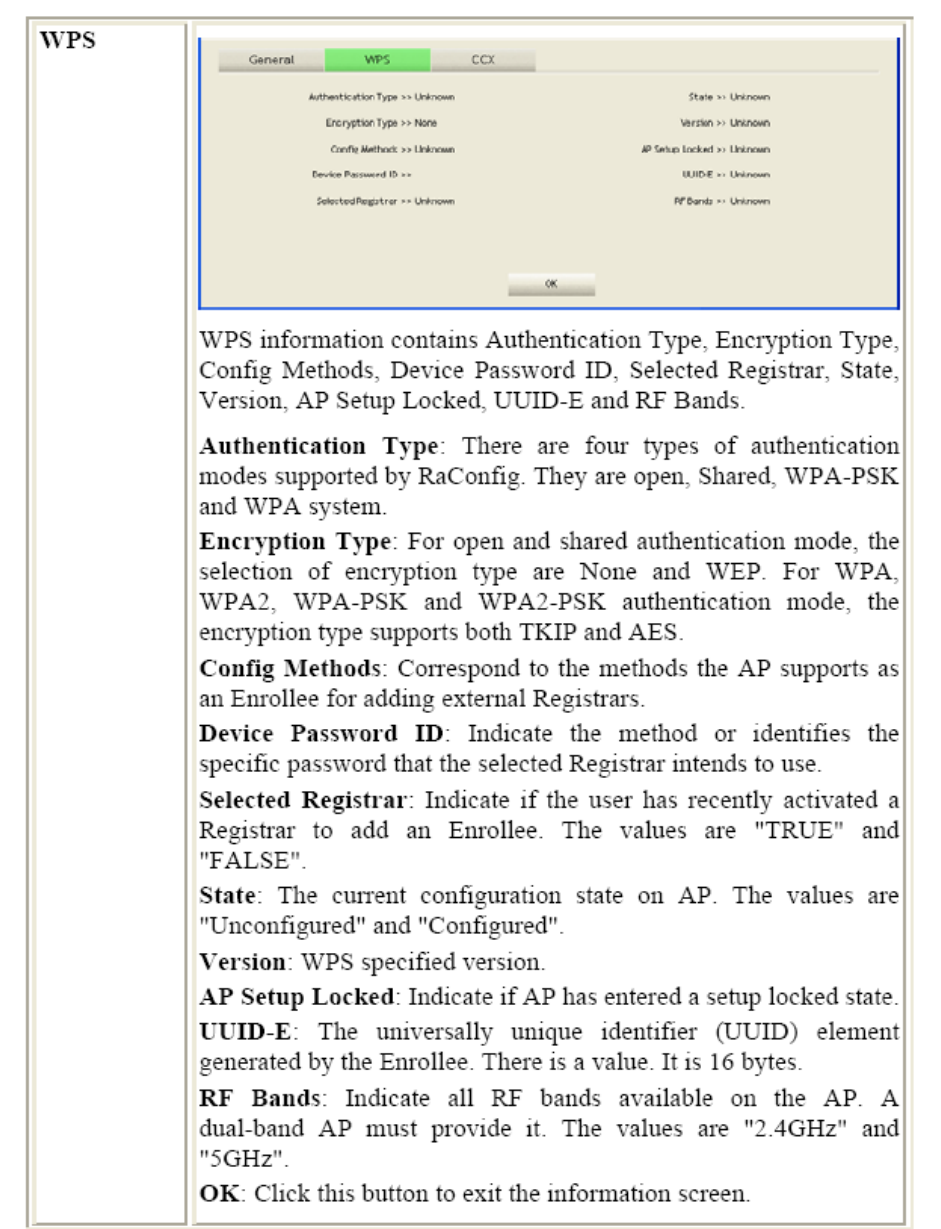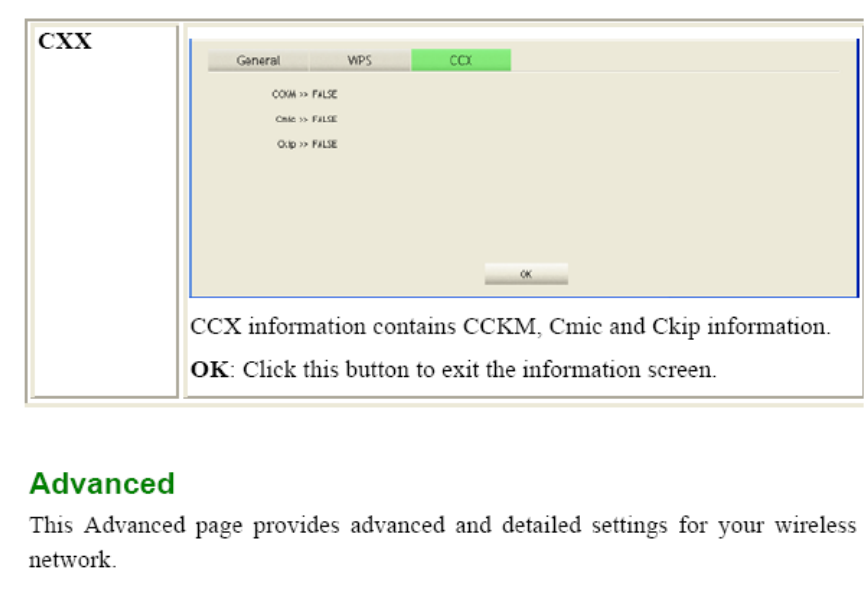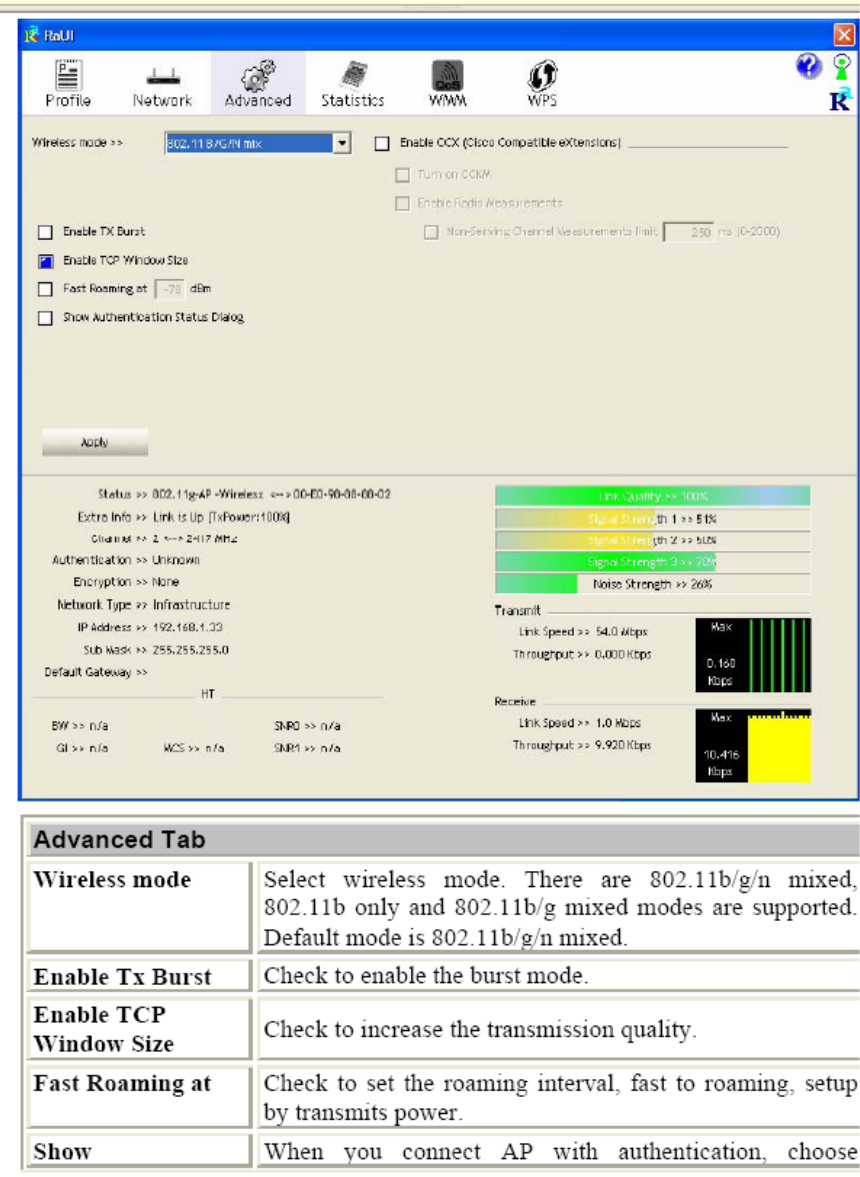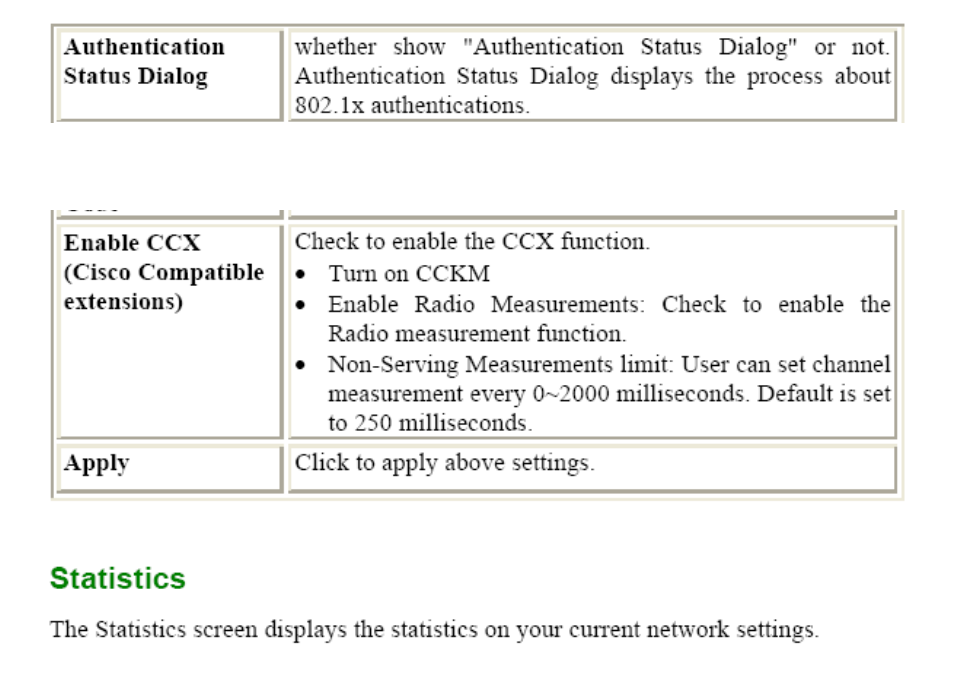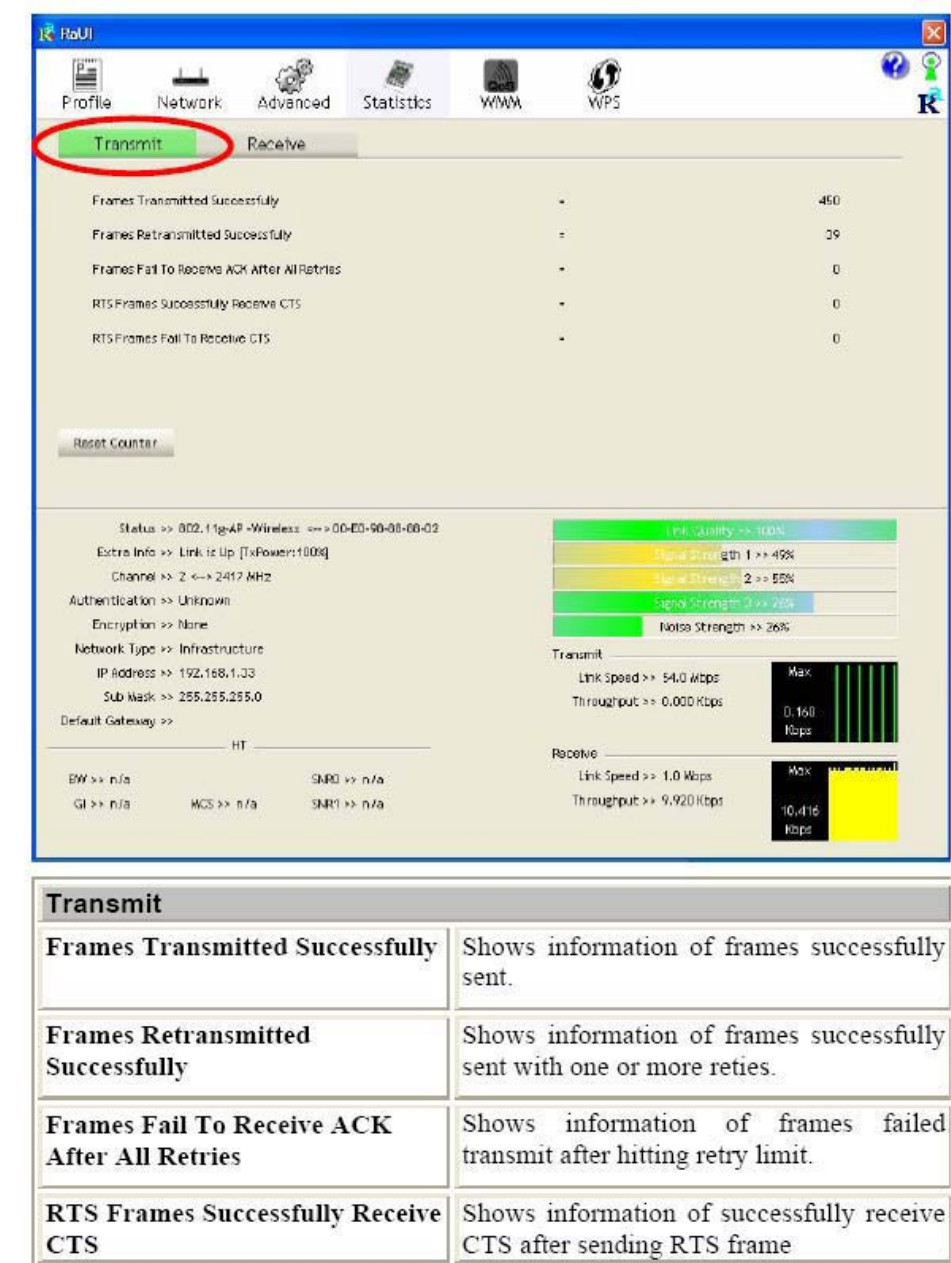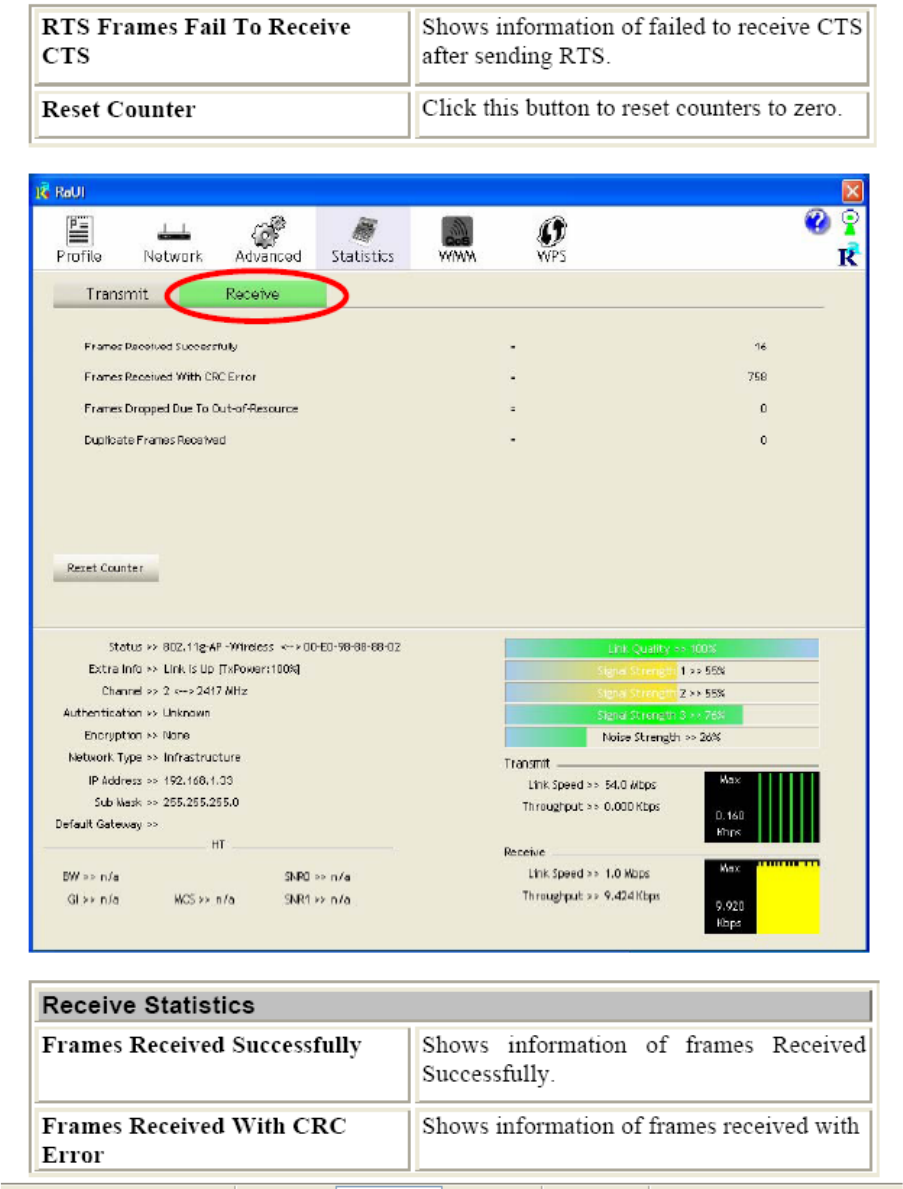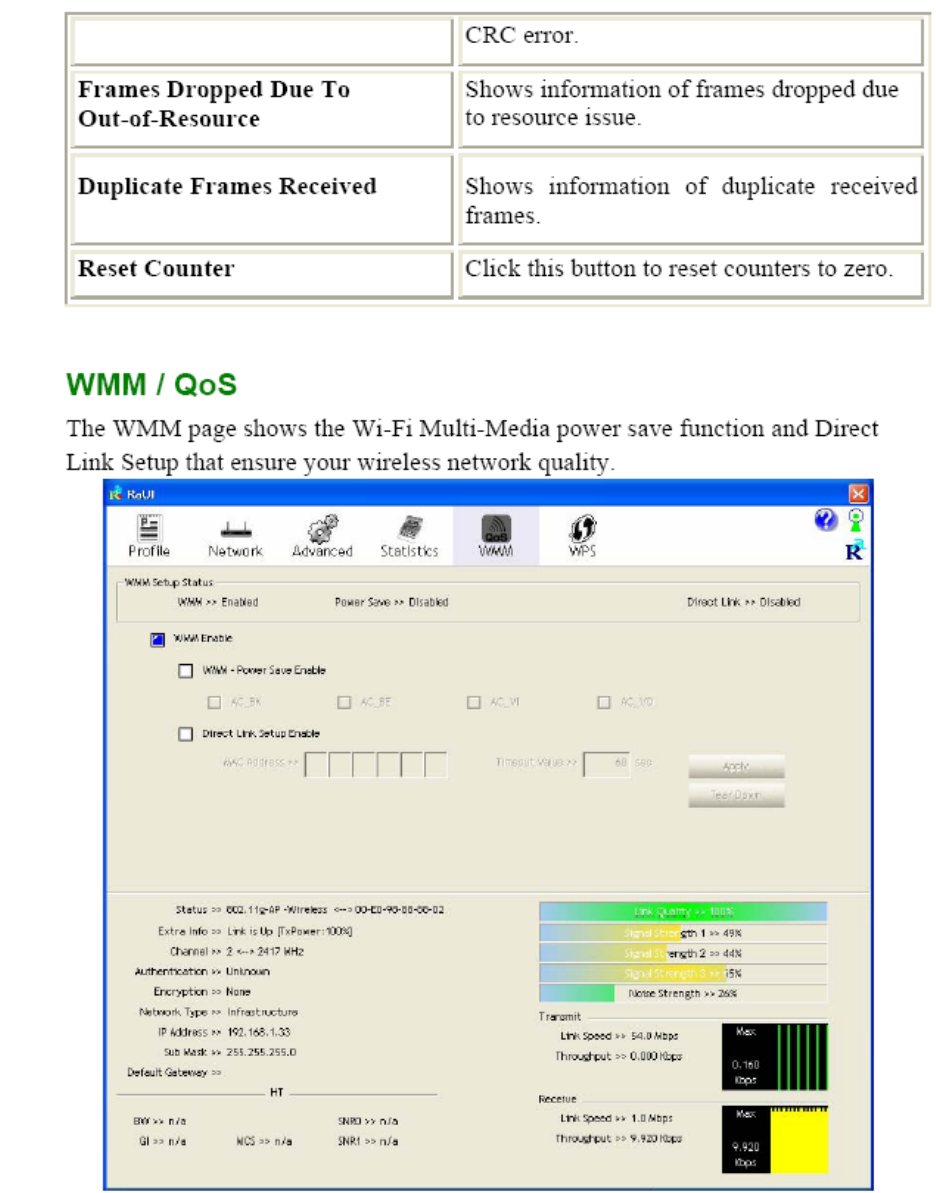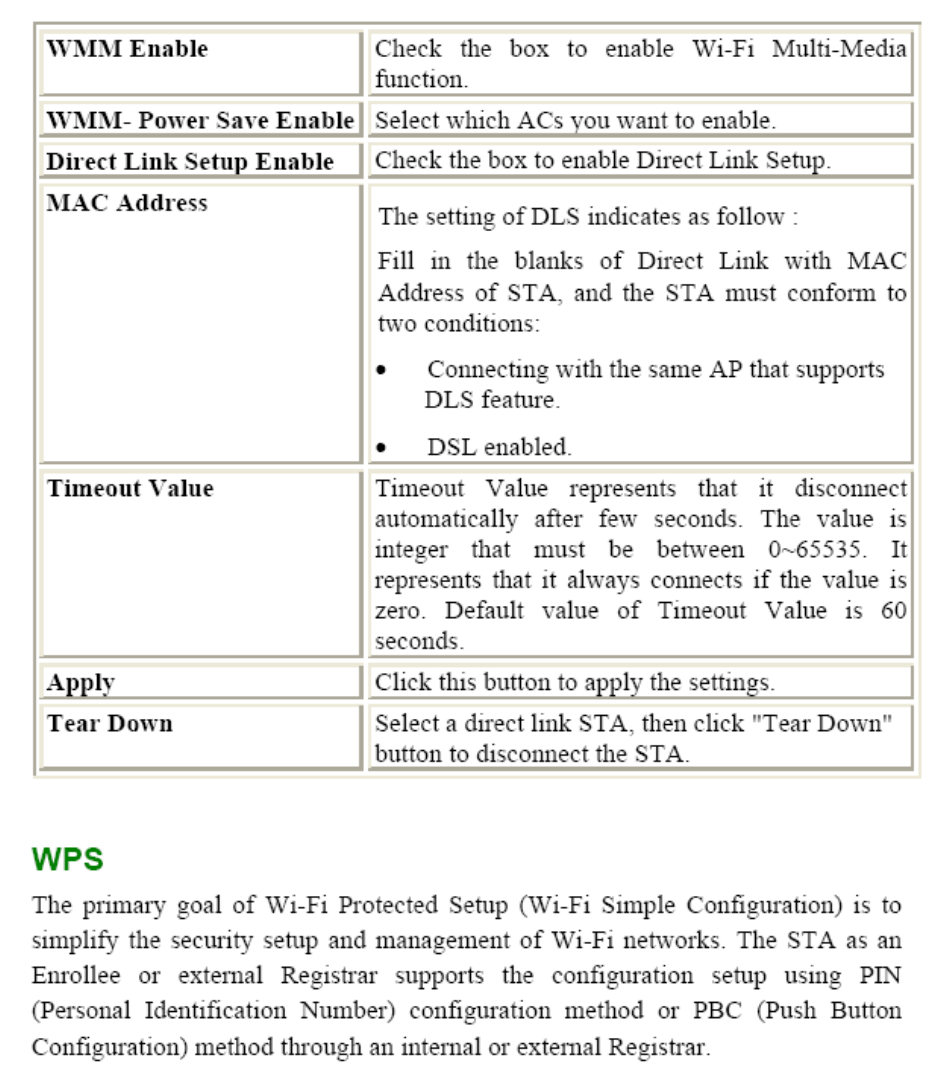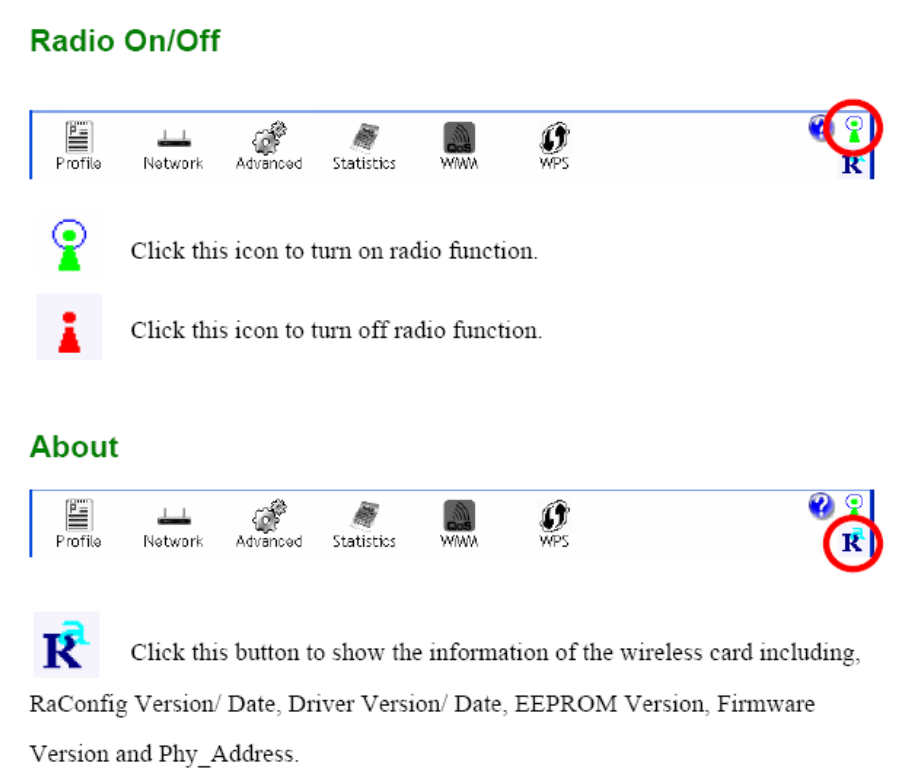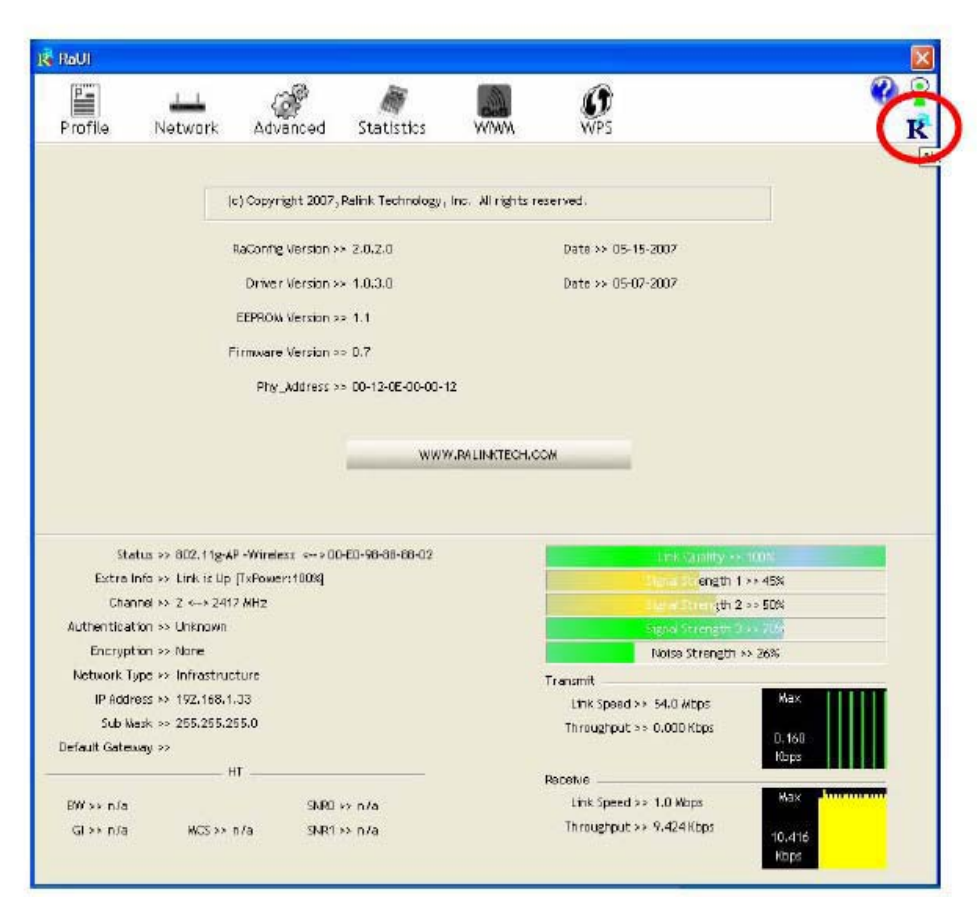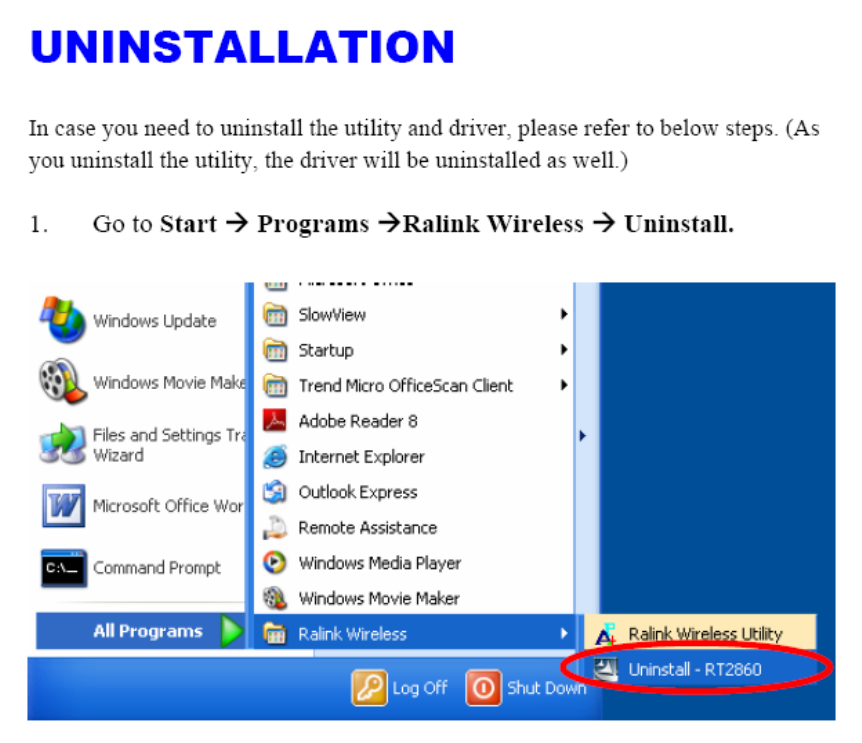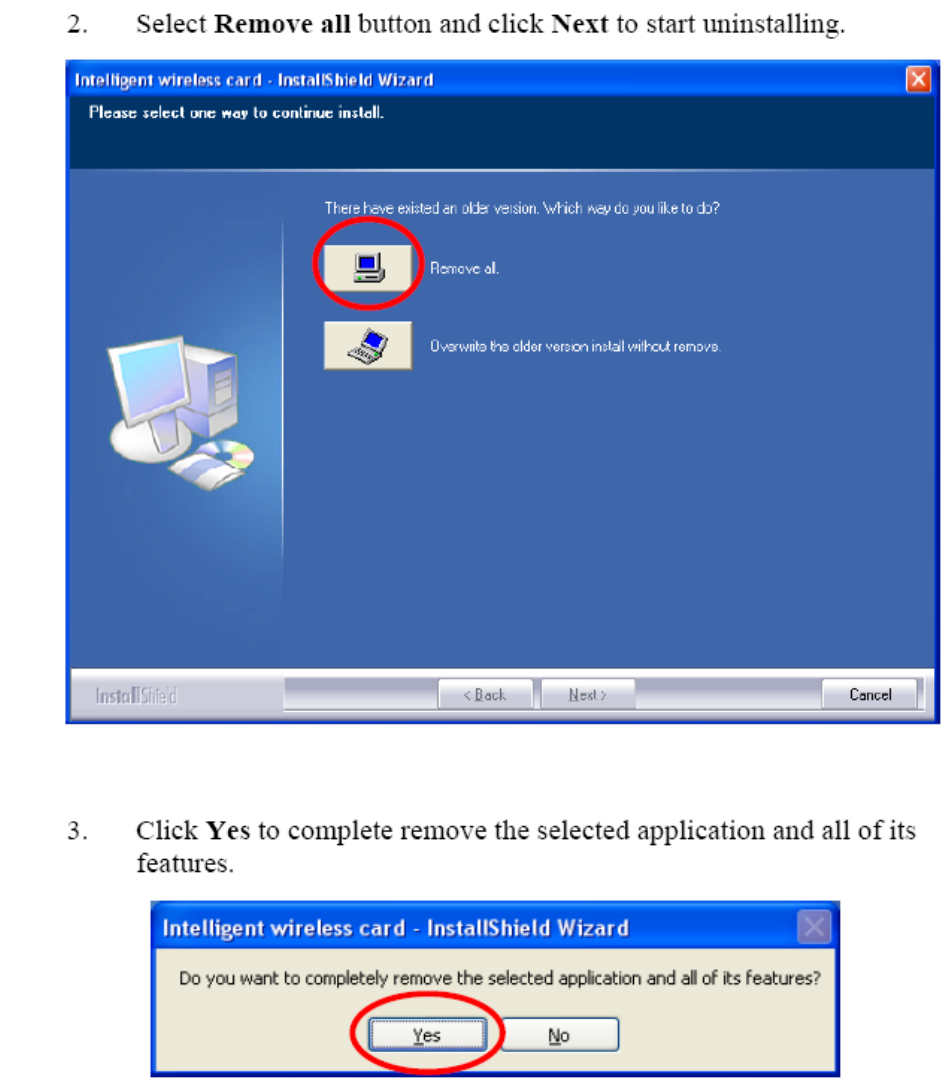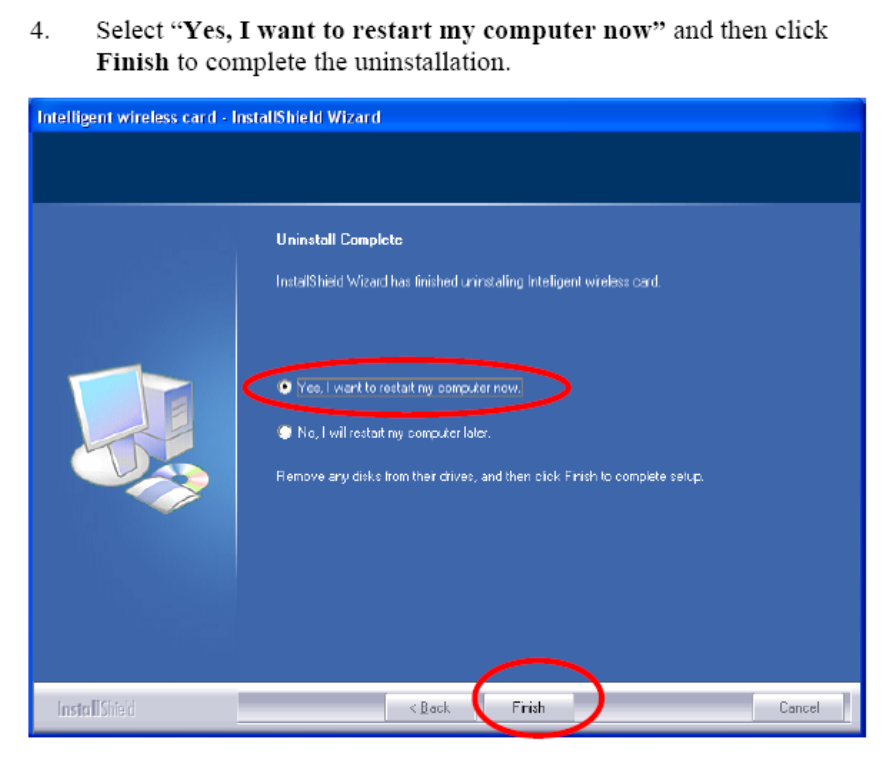MediaTek RT3572 802.11a/b/g/n USB Dongle User Manual Installation guide
MediaTek Inc. 802.11a/b/g/n USB Dongle Installation guide
MediaTek >
Contents
- 1. User Man_VQF-RT3572_rev. 2
- 2. Revised user manual
User Man_VQF-RT3572_rev. 2

802.11a/b/g/n 2T2R USB dongle
RT3572
User’s Manual
Federal Communication Commission Interference Statement
This equipment has been tested and found to comply with the limits for a Class B digital
device, pursuant to Part 15 of the FCC Rules. These limits are designed to provide
reasonable protection against harmful interference in a residential installation. This
equipment generates, uses and can radiate radio frequency energy and, if not installed
and used in accordance with the instructions, may cause harmful interference to radio
communications. However, there is no guarantee that interference will not occur in a
particular installation. If this equipment does cause harmful interference to radio or
television reception, which can be determined by turning the equipment off and on, the
user is encouraged to try to correct the interference by one of the following measures:
- Reorient or relocate the receiving antenna.
- Increase the separation between the equipment and receiver.
- Connect the equipment into an outlet on a circuit different from that
to which the receiver is connected.
- Consult the dealer or an experienced radio/TV technician for help.
FCC Caution: Any changes or modifications not expressly approved by the party
responsible for compliance could void the user's authority to operate this equipment.
This device complies with Part 15 of the FCC Rules. Operation is subject to the
following two conditions: (1) This device may not cause harmful interference, and (2)
this device must accept any interference received, including interference that may
cause undesired operation.
IMPORTANT NOTE:
FCC Radiation Exposure Statement:
This equipment complies with FCC radiation exposure limits set forth for an
uncontrolled environment. This equipment should be installed and operated with
minimum distance 20cm between the radiator & your body.
This transmitter must not be co-located or operating in conjunction with any other
antenna or transmitter.
Operations in the 5.15-5.25GHz band are restricted to indoor usage only.

This device is intended only for OEM integrators under the following conditions:
1) The antenna must be installed such that 20 cm is maintained between the
antenna and users, and
2) The transmitter module may not be co-located with any other transmitter or
antenna,
3) For all products market in US, OEM has to limit the operation channels in CH1 to
CH11 for 2.4G band by supplied firmware programming tool. OEM shall not
supply any tool or info to the end-user regarding to Regulatory Domain change.
As long as 3 conditions above are met, further transmitter test will not be required.
However, the OEM integrator is still responsible for testing their end-product for any
additional compliance requirements required with this module installed
IMPORTANT NOTE: In the event that these conditions can not be met (for example
certain laptop configurations or co-location with another transmitter), then the FCC
authorization is no longer considered valid and the FCC ID can not be used on the
final product. In these circumstances, the OEM integrator will be responsible for
re-evaluating the end product (including the transmitter) and obtaining a separate
FCC authorization.
End Product Labeling
This transmitter module is authorized only for use in device where the antenna may be
installed such that 20 cm may be maintained between the antenna and users. The final
end product must be labeled in a visible area with the following: “Contains FCC ID:
VQF-RT3572”.
Manual Information To the End User
The OEM integrator has to be aware not to provide information to the end user
regarding how to install or remove this RF module in the user’s manual of the end
product which integrates this module.
The end user manual shall include all required regulatory information/warning as show
in this manual.
㪠㫅㪻㫌㫊㫋㫉㫐 㪚㪸㫅㪸㪻㪸 㫊㫋㪸㫋㪼㫄㪼㫅㫋
㪫㪿㫀㫊 㪻㪼㫍㫀㪺㪼 㪺㫆㫄㫇㫃㫀㪼㫊 㫎㫀㫋㪿 㪩㪪㪪㪄㪉㪈㪇 㫆㪽 㫋㪿㪼 㪠㫅㪻㫌㫊㫋㫉㫐 㪚㪸㫅㪸㪻㪸 㪩㫌㫃㪼㫊㪅 㪦㫇㪼㫉㪸㫋㫀㫆㫅 㫀㫊 㫊㫌㪹㫁㪼㪺㫋 㫋㫆 㫋㪿㪼
㪽㫆㫃㫃㫆㫎㫀㫅㪾 㫋㫎㫆 㪺㫆㫅㪻㫀㫋㫀㫆㫅㫊㪑 㩿㪈㪀 㪫㪿㫀㫊 㪻㪼㫍㫀㪺㪼 㫄㪸㫐 㫅㫆㫋 㪺㪸㫌㫊㪼 㪿㪸㫉㫄㪽㫌㫃 㫀㫅㫋㪼㫉㪽㪼㫉㪼㫅㪺㪼㪃 㪸㫅㪻 㩿㪉㪀 㫋㪿㫀㫊 㪻㪼㫍㫀㪺㪼
㫄㫌㫊㫋 㪸㪺㪺㪼㫇㫋 㪸㫅㫐 㫀㫅㫋㪼㫉㪽㪼㫉㪼㫅㪺㪼 㫉㪼㪺㪼㫀㫍㪼㪻㪃 㫀㫅㪺㫃㫌㪻㫀㫅㪾㩷㫀㫅㫋㪼㫉㪽㪼㫉㪼㫅㪺㪼㩷㫋㪿㪸㫋 㫄㪸㫐 㪺㪸㫌㫊㪼 㫌㫅㪻㪼㫊㫀㫉㪼㪻 㫆㫇㪼㫉㪸㫋㫀㫆㫅㪅
㪝㫉㪼㫅㪺㪿㩷㫋㫉㪸㫅㫊㫃㪸㫋㫀㫆㫅㪑
㪚㪼 㪻㫀㫊㫇㫆㫊㫀㫋㫀㪽 㪼㫊㫋 㪺㫆㫅㪽㫆㫉㫄㪼 㫃㪸 㫅㫆㫉㫄㪼 㪚㪥㪩㪄㪉㪈㪇 㪻㩾㪠㫅㪻㫌㫊㫋㫉㫀㪼 㪚㪸㫅㪸㪻㪸 㪸㫇㫇㫃㫀㪺㪸㪹㫃㪼 㪸㫌㫏 㪸㫇㫇㪸㫉㪼㫀㫃㫊 㫉㪸㪻㫀㫆
㪼㫏㪼㫄㫇㫋㫊 㪻㪼 㫃㫀㪺㪼㫅㪺㪼㪅 㪪㫆㫅 㪽㫆㫅㪺㫋㫀㫆㫅㫅㪼㫄㪼㫅㫋 㪼㫊㫋 㫊㫌㫁㪼㫋 㪸㫌㫏 㪻㪼㫌㫏 㪺㫆㫅㪻㫀㫋㫀㫆㫅㫊 㫊㫌㫀㫍㪸㫅㫋㪼㫊㪑 㩿㪈㪀 㫃㪼 㪻㫀㫊㫇㫆㫊㫀㫋㫀㪽
㫅㪼 㪻㫆㫀㫋 㫇㪸㫊 㫇㫉㫆㪻㫌㫀㫉㪼 㪻㪼 㪹㫉㫆㫌㫀㫃㫃㪸㪾㪼 㫇㫉㫁㫌㪻㫀㪺㫀㪸㪹㫃㪼㪃 㪼㫋 㩿㪉㪀 㪺㪼 㪻㫀㫊㫇㫆㫊㫀㫋㫀㪽 㪻㫆㫀㫋 㪸㪺㪺㪼㫇㫋㪼㫉 㫋㫆㫌㫋 㪹㫉㫆㫌㫀㫃㫃㪸㪾㪼
㫉㪼㫌㪃 㫐 㪺㫆㫄㫇㫉㫀㫊 㫌㫅 㪹㫉㫆㫌㫀㫃㫃㪸㪾㪼 㫊㫌㫊㪺㪼㫇㫋㫀㪹㫃㪼 㪻㪼 㫇㫉㫆㫍㫆㫈㫌㪼㫉 㫌㫅 㪽㫆㫅㪺㫋㫀㫆㫅㫅㪼㫄㪼㫅㫋㩷㫀㫅㪻㫊㫀㫉㪸㪹㫃㪼㪅
㪔㪔㪔㪔㪔㪔㪔㪔㪔㪔㪔㪔㪔㪔㪔㪔㪔㪔㪔㪔㪔㪔㪔㪔㪔㪔㪔㪔㪔㪔㪔㪔㪔㪔㪔㪔㪔㪔㪔㪔㪔㪔㪔㪔㪔㪔㪔㪔㪔㪔㪔㪔㪔㪔㪔㪔㪔㪔㪔㪔㪔㪔㪔㪔㪔㪔㪔㪔㪔
㪠㪤㪧㪦㪩㪫㪘㪥㪫 㪥㪦㪫㪜㪑
㪩㪸㪻㫀㪸㫋㫀㫆㫅 㪜㫏㫇㫆㫊㫌㫉㪼 㪪㫋㪸㫋㪼㫄㪼㫅㫋㪑
㪫㪿㫀㫊 㪼㫈㫌㫀㫇㫄㪼㫅㫋 㪺㫆㫄㫇㫃㫀㪼㫊 㫎㫀㫋㪿 㪠㪚 㫉㪸㪻㫀㪸㫋㫀㫆㫅 㪼㫏㫇㫆㫊㫌㫉㪼㩷㫃㫀㫄㫀㫋㫊 㫊㪼㫋㩷㪽㫆㫉㫋㪿㩷㪽㫆㫉 㪸㫅 㫌㫅㪺㫆㫅㫋㫉㫆㫃㫃㪼㪻 㪼㫅㫍㫀㫉㫆㫅㫄㪼㫅㫋㪅
㪫㪿㫀㫊 㪼㫈㫌㫀㫇㫄㪼㫅㫋 㫊㪿㫆㫌㫃㪻 㪹㪼 㫀㫅㫊㫋㪸㫃㫃㪼㪻 㪸㫅㪻 㫆㫇㪼㫉㪸㫋㪼㪻 㫎㫀㫋㪿 㫄㫀㫅㫀㫄㫌㫄 㪻㫀㫊㫋㪸㫅㪺㪼 㪉㪇㪺㫄 㪹㪼㫋㫎㪼㪼㫅㩷㫋㪿㪼 㫉㪸㪻㫀㪸㫋㫆㫉
㩽 㫐㫆㫌㫉 㪹㫆㪻㫐㪅
㩿㫀㪀 㫋㪿㪼 㪻㪼㫍㫀㪺㪼㩷㪽㫆㫉 㫆㫇㪼㫉㪸㫋㫀㫆㫅 㫀㫅㩷㫋㪿㪼㩷㪹㪸㫅㪻 㪌㪈㪌㪇㪄㪌㪉㪌㪇 㪤㪟㫑㩷㫀㫊 㫆㫅㫃㫐㩷㪽㫆㫉㩷㫀㫅㪻㫆㫆㫉 㫌㫊㪼 㫋㫆 㫉㪼㪻㫌㪺㪼 㫋㪿㪼
㫇㫆㫋㪼㫅㫋㫀㪸㫃㩷㪽㫆㫉 㪿㪸㫉㫄㪽㫌㫃 㫀㫅㫋㪼㫉㪽㪼㫉㪼㫅㪺㪼 㫋㫆 㪺㫆㪄㪺㪿㪸㫅㫅㪼㫃㩷㫄㫆㪹㫀㫃㪼 㫊㪸㫋㪼㫃㫃㫀㫋㪼 㫊㫐㫊㫋㪼㫄㫊㪒
㩿㫀㫀㪀 㫋㪿㪼 㫄㪸㫏㫀㫄㫌㫄 㪸㫅㫋㪼㫅㫅㪸 㪾㪸㫀㫅 㫇㪼㫉㫄㫀㫋㫋㪼㪻 㪽㫆㫉 㪻㪼㫍㫀㪺㪼㫊㩷㫀㫅 㫋㪿㪼㩷㪹㪸㫅㪻㫊 㪌㪉㪌㪇㪄㪌㪊㪌㪇 㪤㪟㫑 㪸㫅㪻 㪌㪋㪎㪇㪄㪌㪎㪉㪌
㪤㪟㫑 㫊㪿㪸㫃㫃 㪺㫆㫄㫇㫃㫐 㫎㫀㫋㪿㩷㫋㪿㪼 㪼㪅㫀㪅㫉㪅㫇㪅㩷㫃㫀㫄㫀㫋㪒 㪸㫅㪻
㩿㫀㫀㫀㪀㩷㫋㪿㪼 㫄㪸㫏㫀㫄㫌㫄 㪸㫅㫋㪼㫅㫅㪸 㪾㪸㫀㫅㩷㫇㪼㫉㫄㫀㫋㫋㪼㪻㩷㪽㫆㫉㩷㪻㪼㫍㫀㪺㪼㫊㩷㫀㫅㩷㫋㪿㪼㩷㪹㪸㫅㪻 㪌㪎㪉㪌㪄㪌㪏㪉㪌 㪤㪟㫑 㫊㪿㪸㫃㫃 㪺㫆㫄㫇㫃㫐 㫎㫀㫋㪿
㫋㪿㪼 㪼㪅㫀㪅㫉㪅㫇㪅㩷㫃㫀㫄㫀㫋㫊 㫊㫇㪼㪺㫀㪽㫀㪼㪻㩷㪽㫆㫉㩷㫇㫆㫀㫅㫋㪄㫋㫆㪄㫇㫆㫀㫅㫋 㪸㫅㪻 㫅㫆㫅㩷㫇㫆㫀㫅㫋㪄㫋㫆㪄㫇㫆㫀㫅㫋 㫆㫇㪼㫉㪸㫋㫀㫆㫅 㪸㫊 㪸㫇㫇㫉㫆㫇㫉㫀㪸㫋㪼㪅
㩿㫀㫍㪀 㪬㫊㪼㫉㫊 㫊㪿㫆㫌㫃㪻 㪸㫃㫊㫆㩷㪹㪼 㪸㪻㫍㫀㫊㪼㪻 㫋㪿㪸㫋 㪿㫀㪾㪿㪄㫇㫆㫎㪼㫉 㫉㪸㪻㪸㫉㫊 㪸㫉㪼 㪸㫃㫃㫆㪺㪸㫋㪼㪻 㪸㫊 㫇㫉㫀㫄㪸㫉㫐 㫌㫊㪼㫉㫊㩷㩿㫀㪅㪼㪅 㫇㫉㫀㫆㫉㫀㫋㫐
㫌㫊㪼㫉㫊㪀 㫆㪽 㫋㪿㪼 㪹㪸㫅㪻㫊 㪌㪉㪌㪇㪄㪌㪊㪌㪇 㪤㪟㫑 㪸㫅㪻 㪌㪍㪌㪇㪄㪌㪏㪌㪇 㪤㪟㫑 㪸㫅㪻 㫋㪿㪸㫋 㫋㪿㪼㫊㪼 㫉㪸㪻㪸㫉㫊 㪺㫆㫌㫃㪻 㪺㪸㫌㫊㪼
㫀㫅㫋㪼㫉㪽㪼㫉㪼㫅㪺㪼 㪸㫅㪻㪆㫆㫉㩷㪻㪸㫄㪸㪾㪼㩷㫋㫆 㪣㪜㪄㪣㪘㪥 㪻㪼㫍㫀㪺㪼㫊㪅
㪝㫉㪼㫅㪺㪿㩷㫋㫉㪸㫅㫊㫃㪸㫋㫀㫆㫅㪑
㪥㪦㪫㪜 㪠㪤㪧㪦㪩㪫㪘㪥㪫㪜㪑
㪛㪺㫃㪸㫉㪸㫋㫀㫆㫅 㪻㩾㪼㫏㫇㫆㫊㫀㫋㫀㫆㫅 㪸㫌㫏 㫉㪸㪻㫀㪸㫋㫀㫆㫅㫊㪑
㪚㪼㫋 㫈㫌㫀㫇㪼㫄㪼㫅㫋 㪼㫊㫋 㪺㫆㫅㪽㫆㫉㫄㪼 㪸㫌㫏 㫃㫀㫄㫀㫋㪼㫊 㪻㩾㪼㫏㫇㫆㫊㫀㫋㫀㫆㫅 㪸㫌㫏 㫉㪸㫐㫆㫅㫅㪼㫄㪼㫅㫋㫊 㪠㪚 㫋㪸㪹㫃㫀㪼㫊 㫇㫆㫌㫉 㫌㫅
㪼㫅㫍㫀㫉㫆㫅㫅㪼㫄㪼㫅㫋 㫅㫆㫅 㪺㫆㫅㫋㫉㫃㪅㩷㪚㪼㫋 㫈㫌㫀㫇㪼㫄㪼㫅㫋㩷㪻㫆㫀㫋 㫋㫉㪼㩷㫀㫅㫊㫋㪸㫃㫃㪼㫋 㫌㫋㫀㫃㫀㫊㪸㫍㪼㪺 㫌㫅 㫄㫀㫅㫀㫄㫌㫄 㪻㪼 㪉㪇 㪺㫄
㪻㪼㩷㪻㫀㫊㫋㪸㫅㪺㪼 㪼㫅㫋㫉㪼㩷㫃㪸 㫊㫆㫌㫉㪺㪼㩷㪻㪼 㫉㪸㫐㫆㫅㫅㪼㫄㪼㫅㫋 㪼㫋 㫍㫆㫋㫉㪼 㪺㫆㫉㫇㫊㪅
㪘㫍㪼㫉㫋㫀㫊㫊㪼㫄㪼㫅㫋㪑
㪣㪼 㪾㫌㫀㪻㪼㩷㪻㫌㫋㫀㫃㫀㫊㪸㫋㫀㫆㫅 㪻㪼㫊 㪻㫀㫊㫇㫆㫊㫀㫋㫀㪽㫊 㫇㫆㫌㫉㩷㫉㫊㪼㪸㫌㫏 㫃㫆㪺㪸㫌㫏 㪻㫆㫀㫋 㫀㫅㪺㫃㫌㫉㪼 㪻㪼㫊 㫀㫅㫊㫋㫉㫌㪺㫋㫀㫆㫅㫊 㫇㫉㪺㫀㫊㪼㫊 㫊㫌㫉
㫃㪼㫊 㫉㪼㫊㫋㫉㫀㪺㫋㫀㫆㫅㫊 㫊㫌㫊㫄㪼㫅㫋㫀㫆㫅㫅㪼㫊㪃 㫅㫆㫋㪸㫄㫄㪼㫅㫋 㪑
㩿㫀㪀 㫃㪼㫊 㪻㫀㫊㫇㫆㫊㫀㫋㫀㪽㫊 㪽㫆㫅㪺㫋㫀㫆㫅㫅㪸㫅㫋 㪻㪸㫅㫊 㫃㪸 㪹㪸㫅㪻㪼 㪌 㪈㪌㪇㪄㪌 㪉㪌㪇 㪤㪟㫑 㫊㫆㫅㫋㩷㫉㫊㪼㫉㫍㫊 㫌㫅㫀㫈㫌㪼㫄㪼㫅㫋 㫇㫆㫌㫉 㫌㫅㪼
㫌㫋㫀㫃㫀㫊㪸㫋㫀㫆㫅 㩷㫃㫀㫅㫋㫉㫀㪼㫌㫉 㪸㪽㫀㫅 㪻㪼㩷 㫉㪻㫌㫀㫉㪼 㫃㪼㫊 㫉㫀㫊㫈㫌㪼㫊 㪻㪼 㪹㫉㫆㫌㫀㫃㫃㪸㪾㪼 㫇㫉㫁㫌㪻㫀㪺㫀㪸㪹㫃㪼 㪸㫌㫏 㫊㫐㫊㫋㫄㪼㫊 㪻㪼
㫊㪸㫋㪼㫃㫃㫀㫋㪼㫊㩷㫄㫆㪹㫀㫃㪼㫊 㫌㫋㫀㫃㫀㫊㪸㫅㫋㩷㫃㪼㫊㩷㫄㫄㪼㫊 㪺㪸㫅㪸㫌㫏㪒
㩿㫀㫀㪀㩷㫃㪼 㪾㪸㫀㫅㩷㫄㪸㫏㫀㫄㪸㫃㩷㪻㪸㫅㫋㪼㫅㫅㪼㩷㫇㪼㫉㫄㫀㫊 㫇㫆㫌㫉㩷㫃㪼㫊 㪻㫀㫊㫇㫆㫊㫀㫋㫀㪽㫊 㫌㫋㫀㫃㫀㫊㪸㫅㫋 㫃㪼㫊 㪹㪸㫅㪻㪼㫊 㪌 㪉㪌㪇㪄㪌 㪊㪌㪇 㪤㪟㫑 㪼㫋 㪌
㪋㪎㪇㪄㪌 㪎㪉㪌 㪤㪟㫑㩷㪻㫆㫀㫋 㫊㪼 㪺㫆㫅㪽㫆㫉㫄㪼㫉 㫃㪸 㫃㫀㫄㫀㫋㪼㩷㪻㪼 㫇㪅㫀㪅㫉㪅㪼㪅㪒
㩿㫀㫀㫀㪀 㫃㪼 㪾㪸㫀㫅 㫄㪸㫏㫀㫄㪸㫃㩷㪻㪸㫅㫋㪼㫅㫅㪼㩷㫇㪼㫉㫄㫀㫊 㩿㫇㫆㫌㫉 㫃㪼㫊 㪻㫀㫊㫇㫆㫊㫀㫋㫀㪽㫊 㫌㫋㫀㫃㫀㫊㪸㫅㫋 㫃㪸 㪹㪸㫅㪻㪼 㪌 㪎㪉㪌㪄㪌 㪏㪉㪌 㪤㪟㫑㪀㩷㪻㫆㫀㫋
㫊㪼 㪺㫆㫅㪽㫆㫉㫄㪼㫉 㫃㪸 㫃㫀㫄㫀㫋㪼 㪻㪼 㫇㪅㫀㪅㫉㪅㪼㪅 㫊㫇㪺㫀㪽㫀㪼㫇㫆㫌㫉㩷㫃㪼㫏㫇㫃㫆㫀㫋㪸㫋㫀㫆㫅 㫇㫆㫀㫅㫋 㫇㫆㫀㫅㫋㪼㫋㫅㫆㫅㫇㫆㫀㫅㫋㫇㫆㫀㫅㫋㪃
㫊㪼㫃㫆㫅㩷㫃㪼 㪺㪸㫊㪅
㩿㫀㫍㪀 㪛㪼 㫇㫃㫌㫊㪃 㫃㪼㫊 㫌㫋㫀㫃㫀㫊㪸㫋㪼㫌㫉㫊 㪻㪼㫍㫉㪸㫀㪼㫅㫋 㪸㫌㫊㫊㫀 㫋㫉㪼 㪸㫍㫀㫊㫊 㫈㫌㪼 㫃㪼㫊 㫌㫋㫀㫃㫀㫊㪸㫋㪼㫌㫉㫊 㪻㪼 㫉㪸㪻㪸㫉㫊 㪻㪼 㪿㪸㫌㫋㪼
㫇㫌㫀㫊㫊㪸㫅㪺㪼 㫊㫆㫅㫋㩷 㪻㫊㫀㪾㫅㫊 㫌㫋㫀㫃㫀㫊㪸㫋㪼㫌㫉㫊 㫇㫉㫀㫅㪺㫀㫇㪸㫌㫏 㩿㪺㪅㪄㪄㪻㪅㪃 㫈㫌㫀㫃㫊 㫆㫅㫋 㫃㪸 㫇㫉㫀㫆㫉㫀㫋㪀 㫇㫆㫌㫉 㫃㪼㫊 㪹㪸㫅㪻㪼㫊 㪌
㪉㪌㪇㪄㪌 㪊㪌㪇 㪤㪟㫑 㪼㫋 㪌 㪍㪌㪇㪄㪌 㪏㪌㪇 㪤㪟㫑 㪼㫋 㫈㫌㪼 㪺㪼㫊 㫉㪸㪻㪸㫉㫊 㫇㫆㫌㫉㫉㪸㫀㪼㫅㫋 㪺㪸㫌㫊㪼㫉 㪻㫌 㪹㫉㫆㫌㫀㫃㫃㪸㪾㪼 㪼㫋㪆㫆㫌 㪻㪼㫊
㪻㫆㫄㫄㪸㪾㪼㫊 㪸㫌㫏㩷㪻㫀㫊㫇㫆㫊㫀㫋㫀㪽㫊 㪣㪘㪥㪄㪜㪣㪅

㪫㪿㫀㫊 㪻㪼㫍㫀㪺㪼 㫀㫊 㫀㫅㫋㪼㫅㪻㪼㪻 㫆㫅㫃㫐 㪽㫆㫉 㪦㪜㪤 㫀㫅㫋㪼㪾㫉㪸㫋㫆㫉㫊 㫌㫅㪻㪼㫉 㫋㪿㪼 㪽㫆㫃㫃㫆㫎㫀㫅㪾 㪺㫆㫅㪻㫀㫋㫀㫆㫅㫊㪑
㪈㪀 㪫㪿㪼 㪸㫅㫋㪼㫅㫅㪸 㫄㫌㫊㫋 㪹㪼 㫀㫅㫊㫋㪸㫃㫃㪼㪻 㫊㫌㪺㪿 㫋㪿㪸㫋 㪉㪇 㪺㫄 㫀㫊 㫄㪸㫀㫅㫋㪸㫀㫅㪼㪻 㪹㪼㫋㫎㪼㪼㫅 㫋㪿㪼 㪸㫅㫋㪼㫅㫅㪸 㪸㫅㪻 㫌㫊㪼㫉㫊㪃
㪸㫅㪻
㪉㪀㩷㪫㪿㪼 㫋㫉㪸㫅㫊㫄㫀㫋㫋㪼㫉㩷㫄㫆㪻㫌㫃㪼 㫄㪸㫐 㫅㫆㫋 㪹㪼 㪺㫆㪄㫃㫆㪺㪸㫋㪼㪻 㫎㫀㫋㪿 㪸㫅㫐 㫆㫋㪿㪼㫉㩷㫋㫉㪸㫅㫊㫄㫀㫋㫋㪼㫉 㫆㫉 㪸㫅㫋㪼㫅㫅㪸㪃
㪊㪀 㪝㫆㫉 㪸㫃㫃㩷㫇㫉㫆㪻㫌㪺㫋㫊 㫄㪸㫉㫂㪼㫋㩷㫀㫅㩷㪚㪸㫅㪸㪻㪸㪃 㪦㪜㪤 㪿㪸㫊 㫋㫆㩷㫃㫀㫄㫀㫋㩷㫋㪿㪼 㫆㫇㪼㫉㪸㫋㫀㫆㫅 㪺㪿㪸㫅㫅㪼㫃㫊 㫀㫅 㪚㪟㪈㩷㫋㫆㩷㪚㪟㪈㪈
㪽㫆㫉 㪉㪅㪋㪞㩷㪹㪸㫅㪻 㪹㫐 㫊㫌㫇㫇㫃㫀㪼㪻㩷㪽㫀㫉㫄㫎㪸㫉㪼 㫇㫉㫆㪾㫉㪸㫄㫄㫀㫅㪾㩷㫋㫆㫆㫃㪅 㪦㪜㪤 㫊㪿㪸㫃㫃 㫅㫆㫋 㫊㫌㫇㫇㫃㫐 㪸㫅㫐㩷㫋㫆㫆㫃 㫆㫉㩷㫀㫅㪽㫆㩷㫋㫆
㫋㪿㪼 㪼㫅㪻㪄㫌㫊㪼㫉 㫉㪼㪾㪸㫉㪻㫀㫅㪾㩷㫋㫆 㪩㪼㪾㫌㫃㪸㫋㫆㫉㫐 㪛㫆㫄㪸㫀㫅 㪺㪿㪸㫅㪾㪼㪅
㪘㫊 㫃㫆㫅㪾 㪸㫊 㪊 㪺㫆㫅㪻㫀㫋㫀㫆㫅㫊 㪸㪹㫆㫍㪼 㪸㫉㪼 㫄㪼㫋㪃 㪽㫌㫉㫋㪿㪼㫉 㫋㫉㪸㫅㫊㫄㫀㫋㫋㪼㫉 㫋㪼㫊㫋 㫎㫀㫃㫃 㫅㫆㫋 㪹㪼 㫉㪼㫈㫌㫀㫉㪼㪻㪅 㪟㫆㫎㪼㫍㪼㫉㪃 㫋㪿㪼
㪦㪜㪤 㫀㫅㫋㪼㪾㫉㪸㫋㫆㫉 㫀㫊 㫊㫋㫀㫃㫃 㫉㪼㫊㫇㫆㫅㫊㫀㪹㫃㪼 㪽㫆㫉 㫋㪼㫊㫋㫀㫅㪾 㫋㪿㪼㫀㫉 㪼㫅㪻㪄㫇㫉㫆㪻㫌㪺㫋 㪽㫆㫉 㪸㫅㫐 㪸㪻㪻㫀㫋㫀㫆㫅㪸㫃 㪺㫆㫄㫇㫃㫀㪸㫅㪺㪼
㫉㪼㫈㫌㫀㫉㪼㫄㪼㫅㫋㫊 㫉㪼㫈㫌㫀㫉㪼㪻 㫎㫀㫋㪿㩷㫋㪿㫀㫊㩷㫄㫆㪻㫌㫃㪼 㫀㫅㫊㫋㪸㫃㫃㪼㪻㪅
㪝㫉㪼㫅㪺㪿㩷㫋㫉㪸㫅㫊㫃㪸㫋㫀㫆㫅 㪑
㪚㪼㫋 㪸㫇㫇㪸㫉㪼㫀㫃 㪼㫊㫋 㪺㫆㫅㫌 㫌㫅㫀㫈㫌㪼㫄㪼㫅㫋 㫇㫆㫌㫉㩷㫃㪼㫊㩷㫀㫅㫋㪾㫉㪸㫋㪼㫌㫉㫊 㪦㪜㪤㩷㪻㪸㫅㫊㩷㫃㪼㫊 㪺㫆㫅㪻㫀㫋㫀㫆㫅㫊 㫊㫌㫀㫍㪸㫅㫋㪼㫊㪑
㪈㪀 㪣㩾㪸㫅㫋㪼㫅㫅㪼 㪻㫆㫀㫋 㫋㫉㪼 㫀㫅㫊㫋㪸㫃㫃㪼 㪻㪼 㫋㪼㫃㫃㪼 㫊㫆㫉㫋㪼 㫈㫌㩾㫌㫅㪼 㪻㫀㫊㫋㪸㫅㪺㪼 㪻㪼 㪉㪇 㪺㫄 㪼㫊㫋 㫉㪼㫊㫇㪼㪺㫋㪼㪼㫅㫋㫉㪼
㫃㩾㪸㫅㫋㪼㫅㫅㪼 㪼㫋 㫃㪼㫊 㫌㫋㫀㫃㫀㫊㪸㫋㪼㫌㫉㫊㪃 㪼㫋
㪉㪀 㪣㪼㩷㫄㫆㪻㫌㫃㪼 㫄㪼㫋㫋㪼㫌㫉㩷㫇㪼㫌㫋 㫅㪼㩷㫇㪸㫊 㫋㫉㪼 㪺㫆㫄㫇㫃㪸㫅㫋㪸㫍㪼㪺 㫌㫅 㪸㫌㫋㫉㪼 㫄㪼㫋㫋㪼㫌㫉 㫆㫌 㪸㫅㫋㪼㫅㫅㪼㪃
㪊㪀 㪧㫆㫌㫉 㫋㫆㫌㫊 㫃㪼㫊 㫇㫉㫆㪻㫌㫀㫋㫊 㫍㪼㫅㪻㫌㫊 㪸㫌 㪚㪸㫅㪸㪻㪸㪃 㪦㪜㪤 㪻㫆㫀㫋 㫃㫀㫄㫀㫋㪼㫉 㫃㪼㫊 㪽㫉㫈㫌㪼㫅㪺㪼㫊 㪻㪼 㪽㫆㫅㪺㫋㫀㫆㫅㫅㪼㫄㪼㫅㫋
㪚㪟㪈 㪚㪟㪈㪈 㫇㫆㫌㫉 㪹㪸㫅㪻㪼㫊 㪻㪼 㪽㫉㫈㫌㪼㫅㪺㪼㫊 㪉㪅㪋㪞 㪾㫉㪺㪼 㪸㫌㫏 㫆㫌㫋㫀㫃㫊 㪻㪼 㫄㫀㪺㫉㫆㫇㫉㫆㪾㫉㪸㫄㫄㪸㫋㫀㫆㫅 㪽㫆㫌㫉㫅㫀㫊㪅
㪦㪜㪤 㫅㪼 㪻㫆㫀㫋 㫇㪸㫊 㪽㫆㫌㫉㫅㫀㫉 㪻㩾㫆㫌㫋㫀㫃 㫆㫌 㪻㩾㫀㫅㪽㫆㫉㫄㪸㫋㫀㫆㫅㫊 㫃㩾㫌㫋㫀㫃㫀㫊㪸㫋㪼㫌㫉 㪽㫀㫅㪸㫃 㪼㫅 㪺㪼 㫈㫌㫀 㪺㫆㫅㪺㪼㫉㫅㪼 㫃㪼
㪺㪿㪸㫅㪾㪼㫄㪼㫅㫋 㪻㪼㩷㫉㪾㫃㪼㫄㪼㫅㫋㪸㫋㫀㫆㫅㩷㪻㪼㩷㪻㫆㫄㪸㫀㫅㪼㪅
㪫㪸㫅㫋 㫈㫌㪼 㫃㪼㫊 㪊 㪺㫆㫅㪻㫀㫋㫀㫆㫅㫊 㪺㫀㪄㪻㪼㫊㫊㫌㫊 㫊㫆㫅㫋 㫉㪼㫄㫇㫃㫀㪼㫊㪃 㪻㪼㫊 㪼㫊㫊㪸㫀㫊 㫊㫌㫇㫇㫃㫄㪼㫅㫋㪸㫀㫉㪼㫊 㫊㫌㫉 㫃㩾㫄㪼㫋㫋㪼㫌㫉 㫅㪼
㫊㪼㫉㫆㫅㫋 㫇㪸㫊㩷 㫅㪺㪼㫊㫊㪸㫀㫉㪼㫊㪅 㪫㫆㫌㫋㪼㪽㫆㫀㫊㪃 㫃㩾㫀㫅㫋㪾㫉㪸㫋㪼㫌㫉 㪦㪜㪤 㪼㫊㫋 㫋㫆㫌㫁㫆㫌㫉㫊 㫉㪼㫊㫇㫆㫅㫊㪸㪹㫃㪼 㪻㪼㫊 㪼㫊㫊㪸㫀㫊 㫊㫌㫉 㫊㫆㫅
㫇㫉㫆㪻㫌㫀㫋 㪽㫀㫅㪸㫃 㫇㫆㫌㫉 㫋㫆㫌㫋㪼㫊 㪼㫏㫀㪾㪼㫅㪺㪼㫊 㪻㪼 㪺㫆㫅㪽㫆㫉㫄㫀㫋㫊㫌㫇㫇㫃㫄㪼㫅㫋㪸㫀㫉㪼㫊 㫉㪼㫈㫌㫀㫊 㫇㫆㫌㫉 㪺㪼㩷㫄㫆㪻㫌㫃㪼 㫀㫅㫊㫋㪸㫃㫃㪅
㪠㪤㪧㪦㪩㪫㪘㪥㪫 㪥㪦㪫㪜㪑
㪠㫅 㫋㪿㪼 㪼㫍㪼㫅㫋 㫋㪿㪸㫋 㫋㪿㪼㫊㪼 㪺㫆㫅㪻㫀㫋㫀㫆㫅㫊 㪺㪸㫅 㫅㫆㫋 㪹㪼 㫄㪼㫋 㩿㪽㫆㫉 㪼㫏㪸㫄㫇㫃㪼 㪺㪼㫉㫋㪸㫀㫅 㫃㪸㫇㫋㫆㫇 㪺㫆㫅㪽㫀㪾㫌㫉㪸㫋㫀㫆㫅㫊 㫆㫉
㪺㫆㪄㫃㫆㪺㪸㫋㫀㫆㫅 㫎㫀㫋㪿 㪸㫅㫆㫋㪿㪼㫉 㫋㫉㪸㫅㫊㫄㫀㫋㫋㪼㫉㪀㪃 㫋㪿㪼㫅 㫋㪿㪼 㪚㪸㫅㪸㪻㪸 㪸㫌㫋㪿㫆㫉㫀㫑㪸㫋㫀㫆㫅 㫀㫊 㫅㫆 㫃㫆㫅㪾㪼㫉 㪺㫆㫅㫊㫀㪻㪼㫉㪼㪻 㫍㪸㫃㫀㪻
㪸㫅㪻㩷㫋㪿㪼 㪠㪚 㪠㪛 㪺㪸㫅 㫅㫆㫋 㪹㪼 㫌㫊㪼㪻 㫆㫅㩷㫋㪿㪼㩷㪽㫀㫅㪸㫃㩷㫇㫉㫆㪻㫌㪺㫋㪅 㪠㫅㩷㫋㪿㪼㫊㪼 㪺㫀㫉㪺㫌㫄㫊㫋㪸㫅㪺㪼㫊㪃㩷㫋㪿㪼 㪦㪜㪤 㫀㫅㫋㪼㪾㫉㪸㫋㫆㫉 㫎㫀㫃㫃
㪹㪼 㫉㪼㫊㫇㫆㫅㫊㫀㪹㫃㪼 㪽㫆㫉 㫉㪼㪄㪼㫍㪸㫃㫌㪸㫋㫀㫅㪾 㫋㪿㪼 㪼㫅㪻 㫇㫉㫆㪻㫌㪺㫋 㩿㫀㫅㪺㫃㫌㪻㫀㫅㪾 㫋㪿㪼 㫋㫉㪸㫅㫊㫄㫀㫋㫋㪼㫉㪀 㪸㫅㪻 㫆㪹㫋㪸㫀㫅㫀㫅㪾 㪸

㫊㪼㫇㪸㫉㪸㫋㪼㩷㪚㪸㫅㪸㪻㪸 㪸㫌㫋㪿㫆㫉㫀㫑㪸㫋㫀㫆㫅㪅
㪝㫉㪼㫅㪺㪿㩷㫋㫉㪸㫅㫊㫃㪸㫋㫀㫆㫅㪑
㪥㪦㪫㪜 㪠㪤㪧㪦㪩㪫㪘㪥㪫㪜㪑
㪛㪸㫅㫊 㫃㪼 㪺㪸㫊㩷 㫆㪺㪼㫊 㪺㫆㫅㪻㫀㫋㫀㫆㫅㫊 㫅㪼 㫇㪼㫌㫍㪼㫅㫋 㫋㫉㪼 㫊㪸㫋㫀㫊㪽㪸㫀㫋㪼㫊 㩿㫇㪸㫉 㪼㫏㪼㫄㫇㫃㪼 㫇㫆㫌㫉 㪺㪼㫉㫋㪸㫀㫅㪼㫊
㪺㫆㫅㪽㫀㪾㫌㫉㪸㫋㫀㫆㫅㫊 㪻㩾㫆㫉㪻㫀㫅㪸㫋㪼㫌㫉 㫇㫆㫉㫋㪸㪹㫃㪼 㫆㫌 㪻㪼 㪺㪼㫉㫋㪸㫀㫅㪼㫊 㪺㫆㪄㫃㫆㪺㪸㫃㫀㫊㪸㫋㫀㫆㫅 㪸㫍㪼㪺 㫌㫅 㪸㫌㫋㫉㪼 㫄㪼㫋㫋㪼㫌㫉㪀㪃
㫃㩾㪸㫌㫋㫆㫉㫀㫊㪸㫋㫀㫆㫅 㪻㫌 㪚㪸㫅㪸㪻㪸 㫅㩾㪼㫊㫋㩷㫇㫃㫌㫊 㪺㫆㫅㫊㫀㪻㫉㪺㫆㫄㫄㪼 㫍㪸㫃㫀㪻㪼 㪼㫋㩷㫃㩾㪠㪛 㪠㪚 㫅㪼㩷㫇㪼㫌㫋 㫇㪸㫊 㫋㫉㪼 㫌㫋㫀㫃㫀㫊㫊㫌㫉 㫃㪼
㫇㫉㫆㪻㫌㫀㫋 㪽㫀㫅㪸㫃㪅 㪛㪸㫅㫊 㪺㪼㫊 㪺㫀㫉㪺㫆㫅㫊㫋㪸㫅㪺㪼㫊㪃㩷㫃㩾㫀㫅㫋㪾㫉㪸㫋㪼㫌㫉 㪦㪜㪤 㫊㪼㫉㪸 㪺㪿㪸㫉㪾㪻㪼㩷㫉㫍㪸㫃㫌㪼㫉 㫃㪼㩷㫇㫉㫆㪻㫌㫀㫋㩷㪽㫀㫅㪸㫃㩷㩿㫐
㪺㫆㫄㫇㫉㫀㫊㩷㫃㩾㫄㪼㫋㫋㪼㫌㫉㪀 㪼㫋 㫃㩾㫆㪹㫋㪼㫅㫋㫀㫆㫅 㪻㩾㫌㫅㪼 㪸㫌㫋㫆㫉㫀㫊㪸㫋㫀㫆㫅 㪻㫀㫊㫋㫀㫅㪺㫋㪼 㪸㫌㩷㪚㪸㫅㪸㪻㪸㪅
㪜㫅㪻 㪧㫉㫆㪻㫌㪺㫋 㪣㪸㪹㪼㫃㫀㫅㪾
㪫㪿㫀㫊 㫋㫉㪸㫅㫊㫄㫀㫋㫋㪼㫉 㫄㫆㪻㫌㫃㪼㩷㫀㫊 㪸㫌㫋㪿㫆㫉㫀㫑㪼㪻 㫆㫅㫃㫐㩷㪽㫆㫉 㫌㫊㪼㩷㫀㫅㩷㪻㪼㫍㫀㪺㪼 㫎㪿㪼㫉㪼㩷㫋㪿㪼 㪸㫅㫋㪼㫅㫅㪸 㫄㪸㫐 㪹㪼
㫀㫅㫊㫋㪸㫃㫃㪼㪻 㫊㫌㪺㪿 㫋㪿㪸㫋 㪉㪇 㪺㫄 㫄㪸㫐 㪹㪼 㫄㪸㫀㫅㫋㪸㫀㫅㪼㪻㩷㪹㪼㫋㫎㪼㪼㫅 㫋㪿㪼 㪸㫅㫋㪼㫅㫅㪸 㪸㫅㪻 㫌㫊㪼㫉㫊㪅㩷㪫㪿㪼㩷㪽㫀㫅㪸㫃 㪼㫅㪻
㫇㫉㫆㪻㫌㪺㫋 㫄㫌㫊㫋 㪹㪼㩷㫃㪸㪹㪼㫃㪼㪻㩷㫀㫅 㪸 㫍㫀㫊㫀㪹㫃㪼 㪸㫉㪼㪸 㫎㫀㫋㪿 㫋㪿㪼 㪽㫆㫃㫃㫆㫎㫀㫅㪾㪑 㪚㫆㫅㫋㪸㫀㫅㫊 㪠㪚㪑 㪎㪌㪋㪉㪘㪄㪩㪫㪊㪌㪎㪉㪅
㪝㫉㪼㫅㪺㪿㩷㫋㫉㪸㫅㫊㫃㪸㫋㫀㫆㫅㪑
Plaque signa㫃㫋㫀㫈㫌㪼 㪻㫌 㫇㫉㫆㪻㫌㫀㫋㩷㪽㫀㫅㪸㫃
㪚㪼㩷㫄㫆㪻㫌㫃㪼 㫄㪼㫋㫋㪼㫌㫉 㪼㫊㫋 㪸㫌㫋㫆㫉㫀㫊㫌㫅㫀㫈㫌㪼㫄㪼㫅㫋 㫇㫆㫌㫉 㫌㫅㪼 㫌㫋㫀㫃㫀㫊㪸㫋㫀㫆㫅㩷㪻㪸㫅㫊 㫌㫅 㪻㫀㫊㫇㫆㫊㫀㫋㫀㪽㩷㫆
㫃㩾㪸㫅㫋㪼㫅㫅㪼 㫇㪼㫌㫋 㫋㫉㪼 㫀㫅㫊㫋㪸㫃㫃㪼㩷㪻㪼㩷㫋㪼㫃㫃㪼 㫊㫆㫉㫋㪼㩷㫈㫌㩾㫌㫅㪼㩷㪻㫀㫊㫋㪸㫅㪺㪼㩷㪻㪼 㪉㪇㪺㫄 㫇㪼㫌㫋 㫋㫉㪼 㫄㪸㫀㫅㫋㪼㫅㫌㪼 㪼㫅㫋㫉㪼
㫃㩾㪸㫅㫋㪼㫅㫅㪼 㪼㫋 㫃㪼㫊 㫌㫋㫀㫃㫀㫊㪸㫋㪼㫌㫉㫊㪅 㪣㪼㩷㫇㫉㫆㪻㫌㫀㫋㩷㪽㫀㫅㪸㫃㩷㪻㫆㫀㫋 㫋㫉㪼 㫋㫀㫈㫌㪼㫋㩷㪻㪸㫅㫊 㫌㫅 㪼㫅㪻㫉㫆㫀㫋 㫍㫀㫊㫀㪹㫃㪼 㪸㫍㪼㪺
㫃㩾㫀㫅㫊㪺㫉㫀㫇㫋㫀㫆㫅 㫊㫌㫀㫍㪸㫅㫋㪼㪑 㩹㪚㫆㫅㫋㫀㪼㫅㫋㩷㪻㪼㫊 㪠㪚㪑 㪎㪌㪋㪉㪘㪄㪩㪫㪊㪌㪎㪉 㩹㪅
㪤㪸㫅㫌㪸㫃 㪠㫅㪽㫆㫉㫄㪸㫋㫀㫆㫅 㪫㫆 㫋㪿㪼 㪜㫅㪻 㪬㫊㪼㫉
㪫㪿㪼 㪦㪜㪤 㫀㫅㫋㪼㪾㫉㪸㫋㫆㫉 㪿㪸㫊㩷㫋㫆㩷㪹㪼 㪸㫎㪸㫉㪼 㫅㫆㫋 㫋㫆 㫇㫉㫆㫍㫀㪻㪼㩷㫀㫅㪽㫆㫉㫄㪸㫋㫀㫆㫅㩷㫋㫆 㫋㪿㪼 㪼㫅㪻 㫌㫊㪼㫉 㫉㪼㪾㪸㫉㪻㫀㫅㪾 㪿㫆㫎
㫋㫆㩷㫀㫅㫊㫋㪸㫃㫃 㫆㫉 㫉㪼㫄㫆㫍㪼㩷㫋㪿㫀㫊 㪩㪝 㫄㫆㪻㫌㫃㪼㩷㫀㫅 㫋㪿㪼 㫌㫊㪼㫉㫊 㫄㪸㫅㫌㪸㫃 㫆㪽㩷㫋㪿㪼 㪼㫅㪻㩷㫇㫉㫆㪻㫌㪺㫋 㫎㪿㫀㪺㪿㩷㫀㫅㫋㪼㪾㫉㪸㫋㪼㫊
㫋㪿㫀㫊㩷㫄㫆㪻㫌㫃㪼㪅
㪫㪿㪼 㪼㫅㪻 㫌㫊㪼㫉 㫄㪸㫅㫌㪸㫃 㫊㪿㪸㫃㫃 㫀㫅㪺㫃㫌㪻㪼 㪸㫃㫃 㫉㪼㫈㫌㫀㫉㪼㪻 㫉㪼㪾㫌㫃㪸㫋㫆㫉㫐㩷㫀㫅㪽㫆㫉㫄㪸㫋㫀㫆㫅㪆㫎㪸㫉㫅㫀㫅㪾 㪸㫊 㫊㪿㫆㫎㩷㫀㫅 㫋㪿㫀㫊
㫄㪸㫅㫌㪸㫃㪅
㪝㫉㪼㫅㪺㪿㩷㫋㫉㪸㫅㫊㫃㪸㫋㫀㫆㫅㪑
㪤㪸㫅㫌㪼㫃 㪻㩾㫀㫅㪽㫆㫉㫄㪸㫋㫀㫆㫅 㫃㩾㫌㫋㫀㫃㫀㫊㪸㫋㪼㫌㫉 㪽㫀㫅㪸㫃
㪣㩾㫀㫅㫋㪾㫉㪸㫋㪼㫌㫉 㪦㪜㪤 㪻㫆㫀㫋 㫋㫉㪼 㪺㫆㫅㫊㪺㫀㪼㫅㫋 㪻㪼 㫅㪼 㫇㪸㫊㩷㪽㫆㫌㫉㫅㫀㫉 㪻㪼㫊㩷㫀㫅㪽㫆㫉㫄㪸㫋㫀㫆㫅㫊 㩷㫃㩾㫌㫋㫀㫃㫀㫊㪸㫋㪼㫌㫉 㪽㫀㫅㪸㫃
㫈㫌㪸㫅㫋 㩷㫃㪸 㪽㪸㫆㫅 㪻㩾㫀㫅㫊㫋㪸㫃㫃㪼㫉 㫆㫌㩷㪻㪼 㫊㫌㫇㫇㫉㫀㫄㪼㫉 㪺㪼㩷㫄㫆㪻㫌㫃㪼 㪩㪝 㪻㪸㫅㫊㩷㫃㪼 㫄㪸㫅㫌㪼㫃㩷㪻㪼 㫃㩾㫌㫋㫀㫃㫀㫊㪸㫋㪼㫌㫉 㪻㫌
㫇㫉㫆㪻㫌㫀㫋 㪽㫀㫅㪸㫃 㫈㫌㫀 㫀㫅㫋㪾㫉㪼 㪺㪼㩷㫄㫆㪻㫌㫃㪼㪅
㪣㪼 㫄㪸㫅㫌㪼㫃㩷㪻㪼 㫃㩾㫌㫋㫀㫃㫀㫊㪸㫋㪼㫌㫉㩷㪽㫀㫅㪸㫃㩷㪻㫆㫀㫋㩷㫀㫅㪺㫃㫌㫉㪼㩷㫋㫆㫌㫋㪼㫊㩷㫃㪼㫊 㫀㫅㪽㫆㫉㫄㪸㫋㫀㫆㫅㫊㩷㫉㪾㫃㪼㫄㪼㫅㫋㪸㫀㫉㪼㫊 㫉㪼㫈㫌㫀㫊㪼㫊 㪼㫋
㪸㫍㪼㫉㫋㫀㫊㫊㪼㫄㪼㫅㫋㫊 㪺㫆㫄㫄㪼㩷㫀㫅㪻㫀㫈㫌㪻㪸㫅㫊 㪺㪼㩷㫄㪸㫅㫌㪼㫃㪅
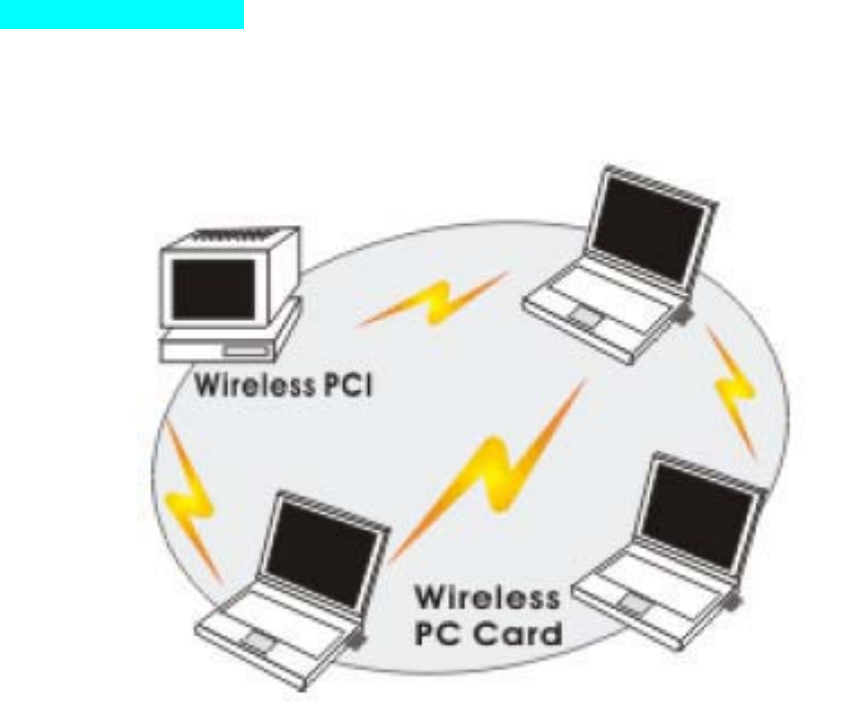
INTRODUCTION
The 11a/b/g/n 2T2R WLAN Mini Card is a device that allows you connect your computer to a wireless local
area network (LAN). A wireless LAN allows your system to use wireless Radio Frequency (RF) technology to
transmit and receive data without physically attaching to the network. The Wireless protocols that come with
this product ensure data security and isolation from interference generated by other radio frequencies. This
card also allows you to take full advantage of your computer’s mobility with access to real-time information
and online services anytime and anywhere. In addition, this device eliminates the bother of pulling cable
through walls and under furniture. It even allows you to place your system in locations where cabling is
impossible. Modifying and augmenting networks has never been so easy.
Wireless Network Options
The Peer-to-Peer Network
This network installation lets you set a small wireless workgroup easily and quickly. Equipped with wireless
PC Cards or wireless PCI, you can share files and printers between each PC and laptop.
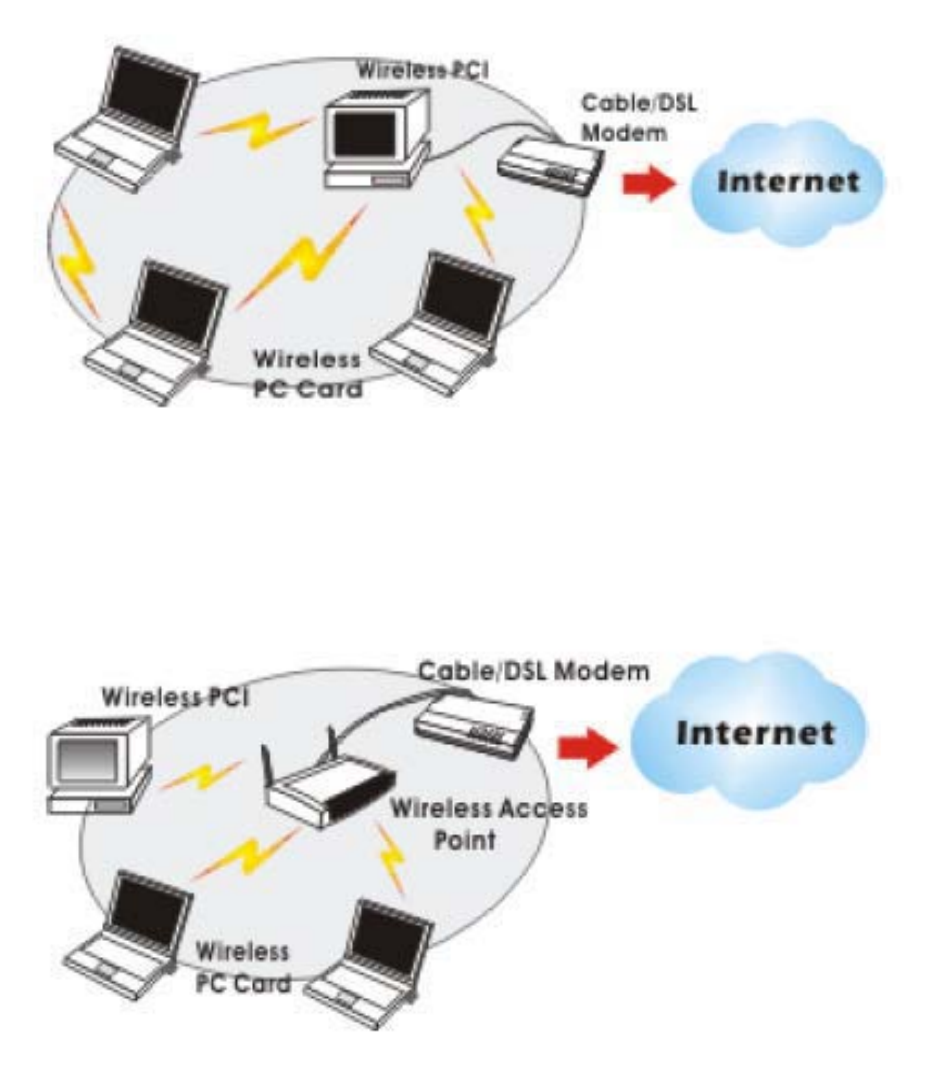
You can also use one computer as an Internet Server to connect to a wired global network and share files
and information with other computers via a wireless LAN.
The Access Point Network The network installation allows you to share files, printers, and Internet access
much more conveniently. With Wireless LAN Cards, you can connect wireless LAN to a wired global
network via an Access Point.
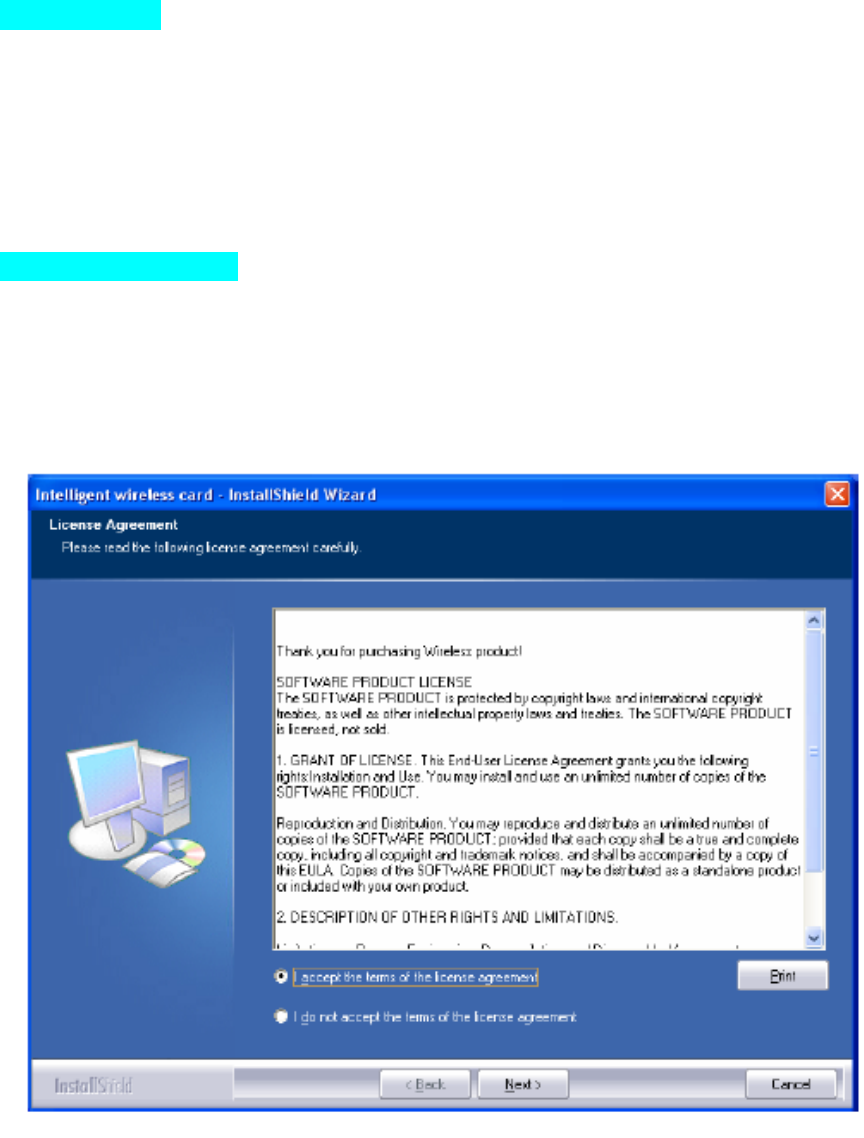
SOFTWARE INSTALLATION
Install the device
1. Make sure the computer is turned off. Remove the expansion slot cover from the computer.
2. Carefully slide the 11a/b/g/n 2T2R USB dongle into the slot. Push evenly and slowly and ensure it is
properly seated.
3. After the device has been connected to your computer, turn on your computer. Windows will detect the
new hardware and then automatically copy all of the files needed for networking.
Install the Driver & Utility
1. Exit all Windows programs. Insert the included CD-ROM into your computer. The CD-ROM will run
automatically.
2. When the License Agreement screen appears, please read the contents and select “I accept the terms of
the license agreement “ then click Next to continue.
4/ Select the check box to choose a Configuration Tool from the listed two choices.
- Configuration Tool: Choose to use our configuration utility.
- Microsoft Zero Configuration Tool: Choose to use Windows XP’s built-in Zero Configuration Utility (ZCU).
Click Next to continue.
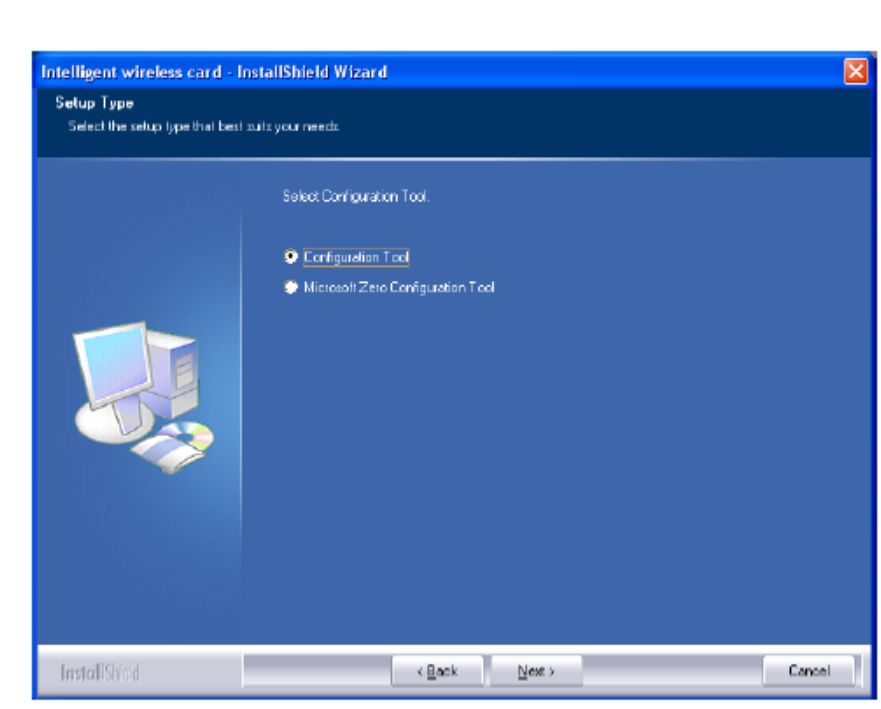
5/ There are two modes for you to choose in this screen, either choose WiFi mode or performance
mode (TxBurst mode). This mode selection screen is set for the default mode shown in the utility
screen, you can still change its mode later in the utility screen. Click Next to continue.
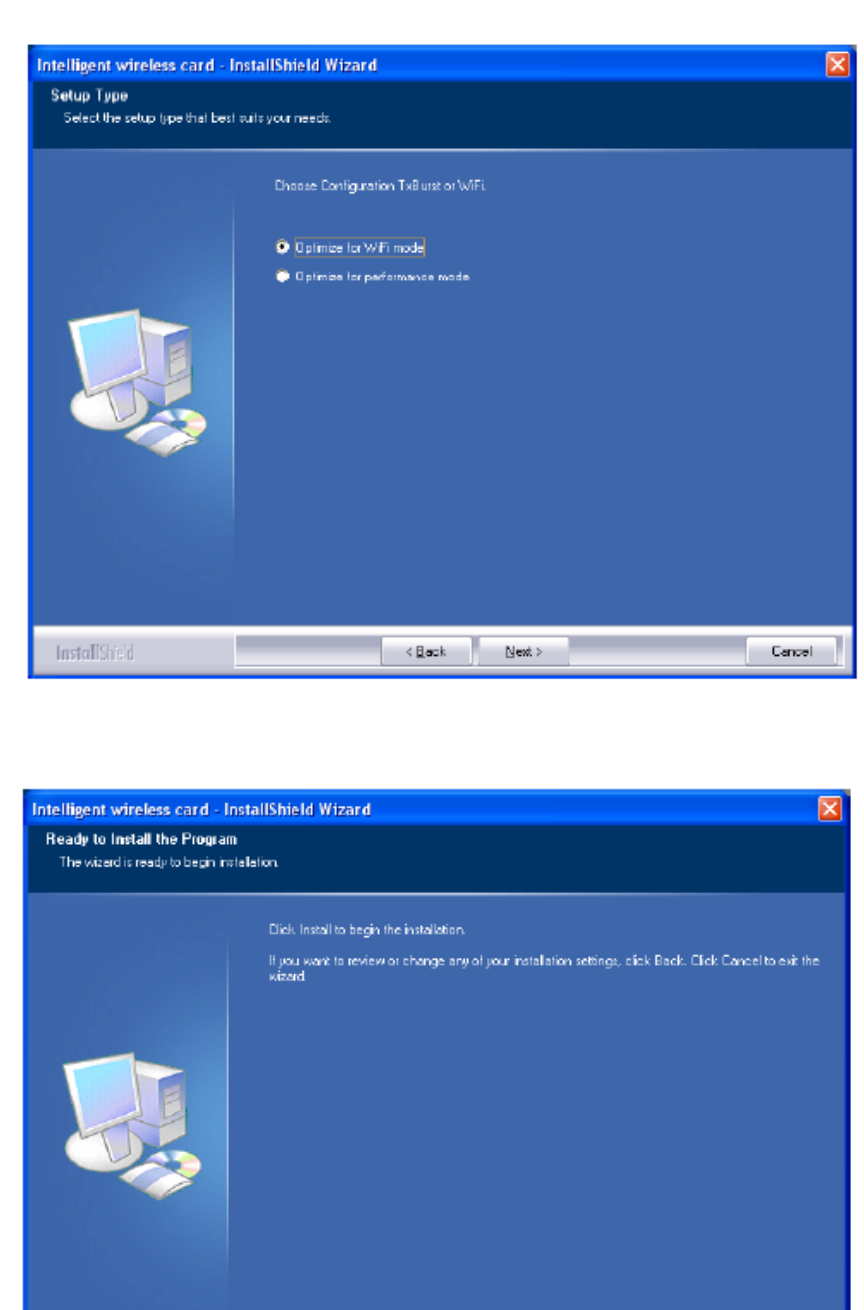
6/ When you are prompted the following message, please click Install to begin the installation.
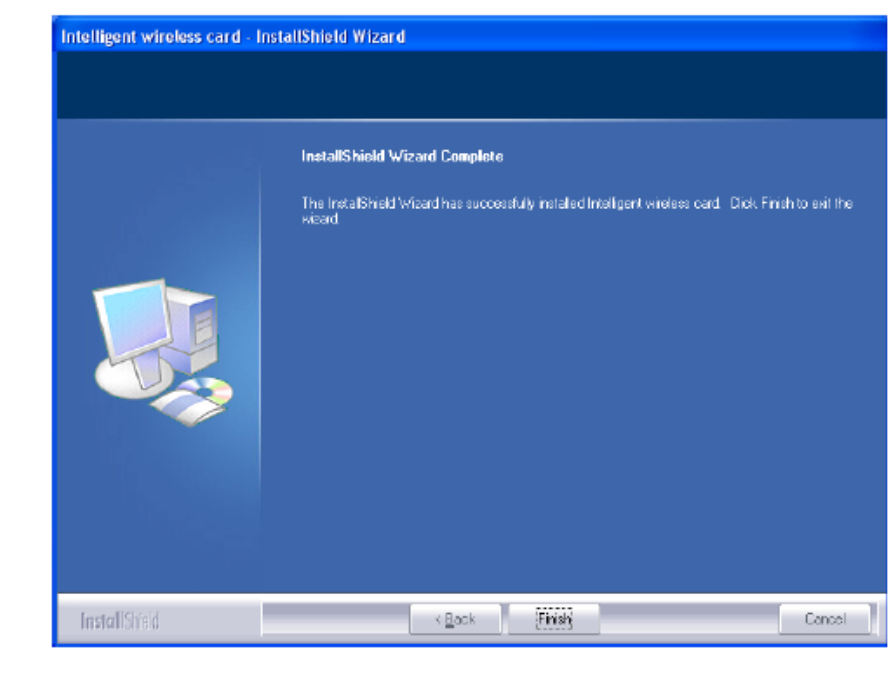
6. When the following screen appears, click Finish to complete the software installation.
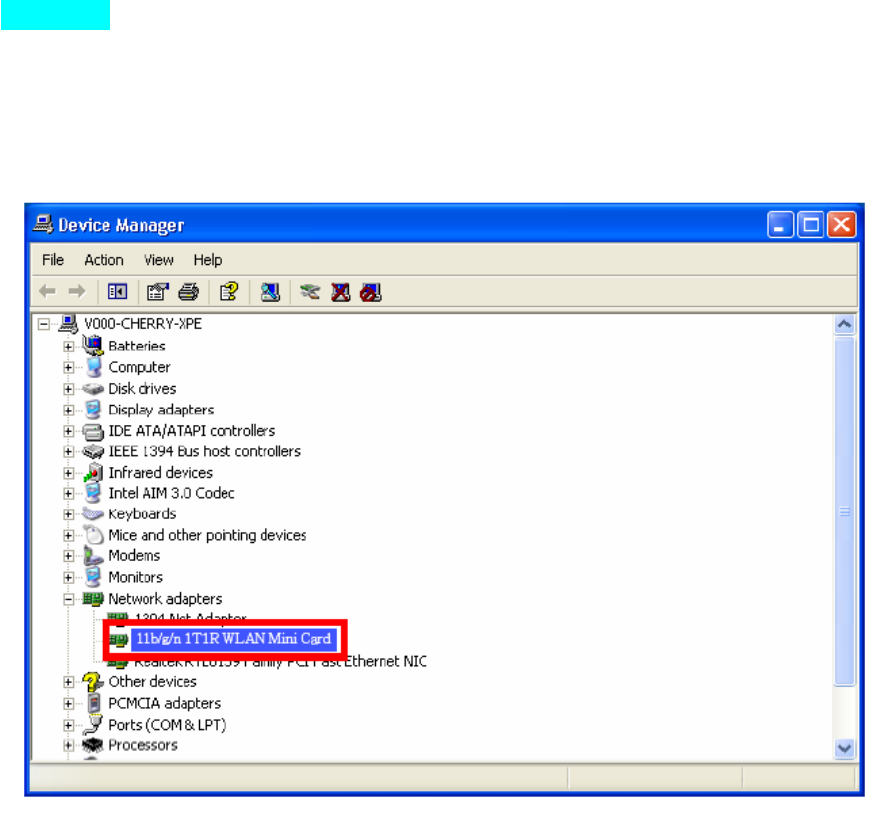
HARDWARE INSTALLATION
Verification
To verify if the device exists in your computer and is enabled, go to Start > Control Panel > System (>
Hardware) > Device Manager. Expand the Network Adapters category. If the 11a/b/g/n 2T2R USB
dongle listed here, it means that your device is properly installed and enabled.
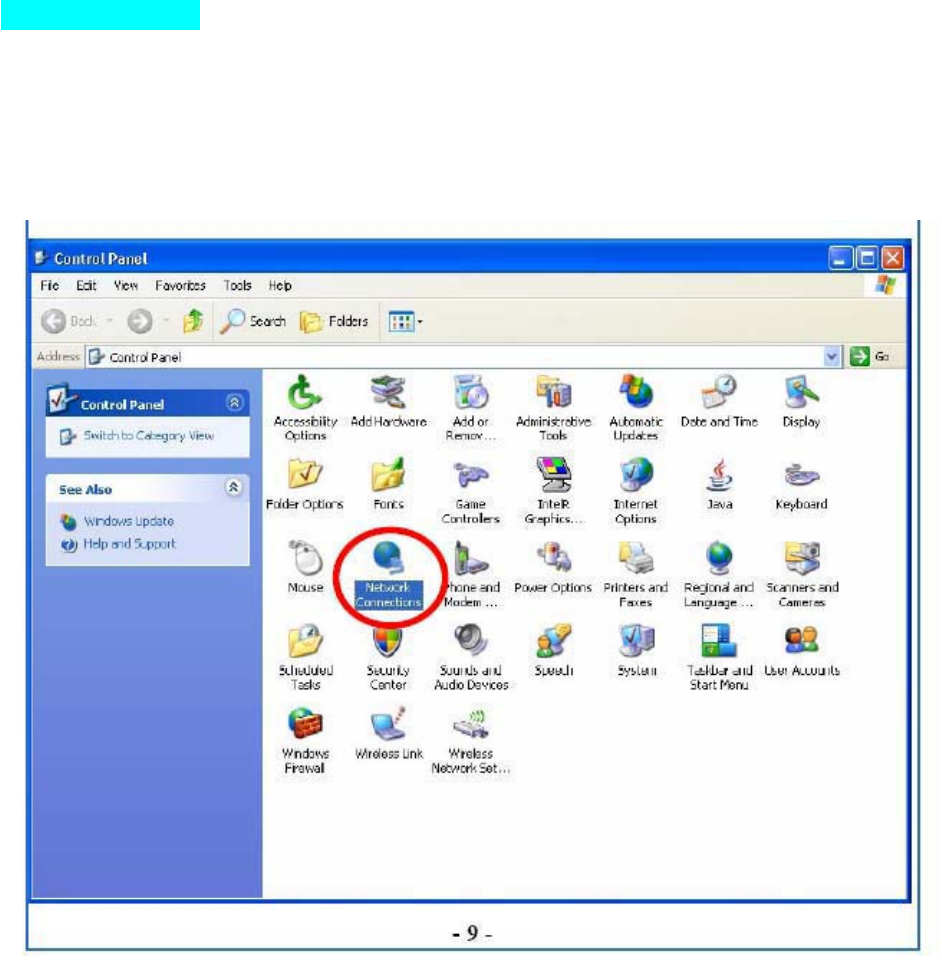
NETWORK CONNECTION
Once the device driver is well installed, a network setting described in the following should be also
established.
In Windows 2000/ XP
1. (In Windows 2000) Go to Start Æ Settings Æ Control Panel Æ Network and Dial-up Connections
Local Area Connection Æ Properties.
(In Windows XP) Go to Start Æ Control Panel Æ Network and Internet Connections Æ Network
Connections Æ Wireless Network Connection Æ Properties.
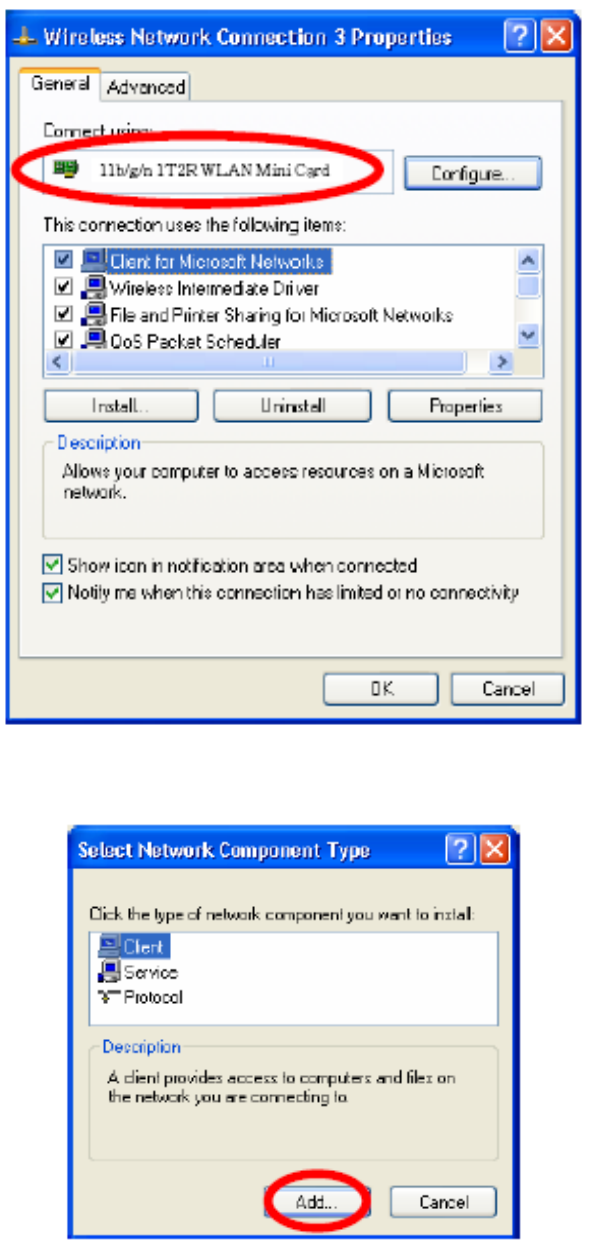
2. Make sure that all the required components are installed.
3. If any components are missing, click on the Install… button to select the Client/Service/Protocol
required. After selecting the component you need, click Add… to add it in.
4. For making your computer visible on the network, make sure you have installed File and Printer Sharing
for Microsoft Networks.
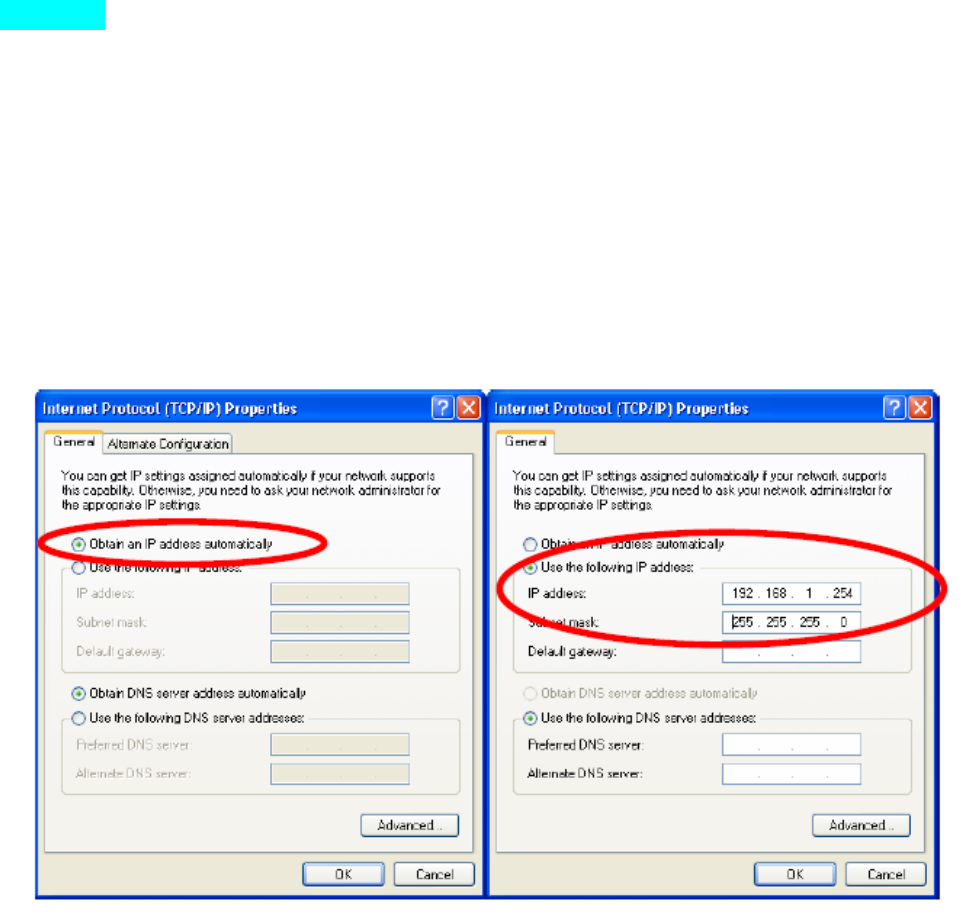
IP Address
Note: When assigning IP Addresses to the computers on the network, remember to have the IP address for
each computer set on the same subnet mask. If your Broadband Router use DHCP technology, however, it
won’t be necessary for you to assign Static IP Address for your computer.
1. To configure a dynamic IP address (i.e. if your broadband Router has the DHCP technology), check the
Obtain an IP Address Automatically option.
2. To configure a fixed IP address (if you broadband Router is not DHCP supported, or when you need to
assign a static IP address), check the Use the following IP address option. Then, enter an IP address into the
empty field; for example, enter 192.168.1.254 in the IP address field, and 255.255.255.0 for the Subnet Mask.
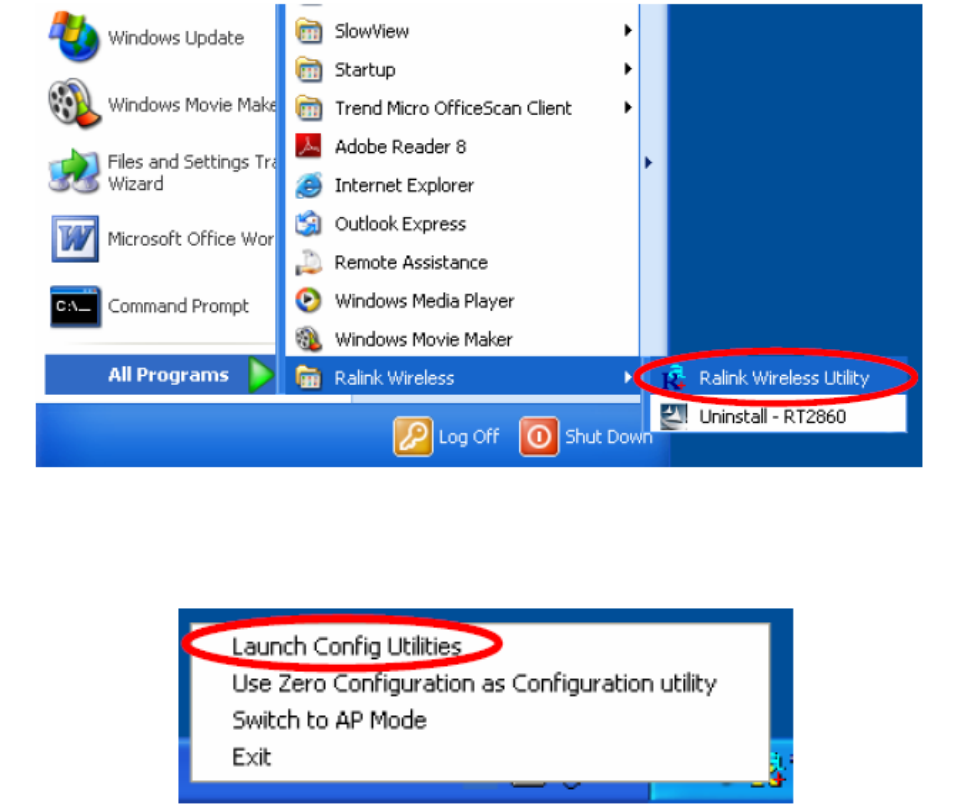
CONFIGURATION UTILITY
After the Wireless adapter has been successfully installed, users can use the included Configuration Utility to
set their preference. Go to StartÆ (All) ProgramsÆ Ralink Wireless ÆRalink Wireless Utility.
You can also open the Configuration Utility by double clicking the icon or right clicking to select Launch
Config Utilities.
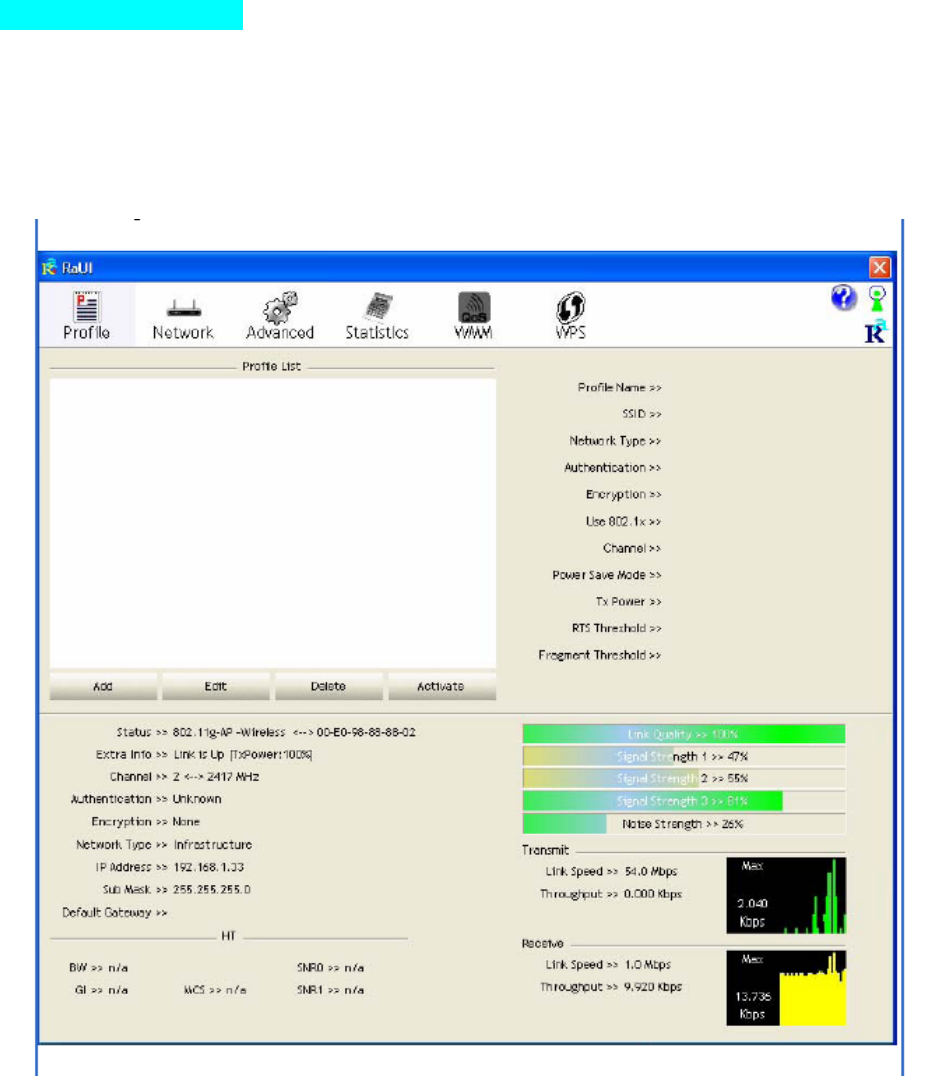
Intelligent Wireless Utility
Profile
Profile can book keeping your favorite wireless setting among your home, office, and other public hot-spot.
You may save multiple profiles, and activate the correct one at your preference. The Profile manager enables
you to Add, Edit, Delete and Activate profiles.
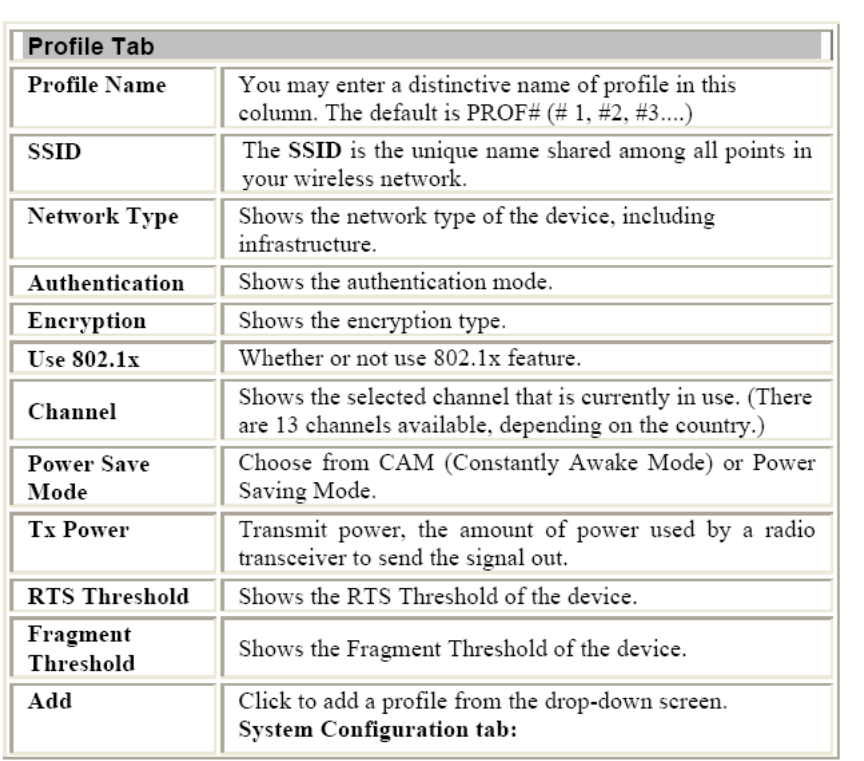
Network The Network page displays the information of surrounding APs from last scan result. The tab lists
the information including SSID, Network type, Channel, Wireless mode, Security-Enabled and Signal.
